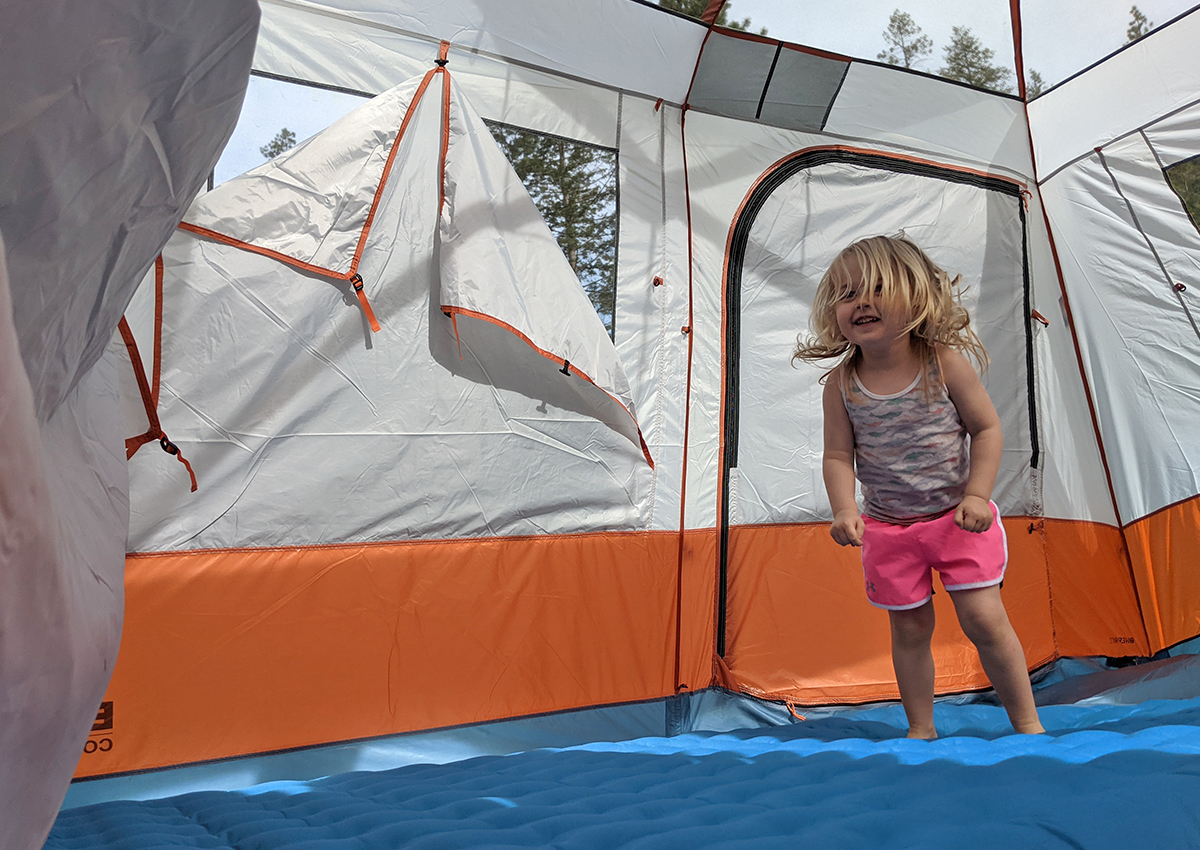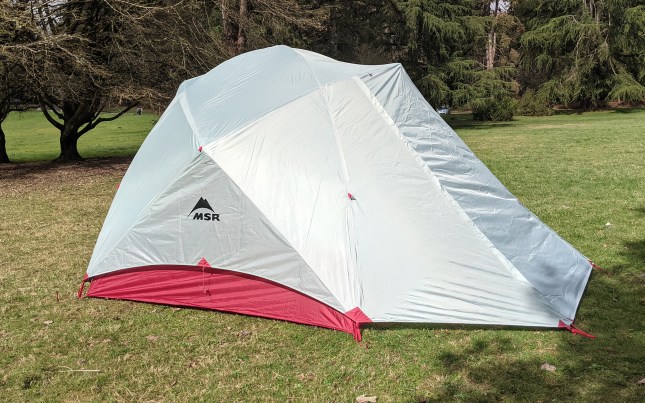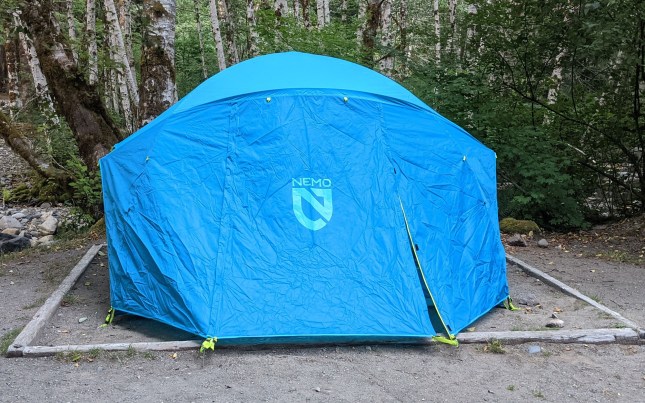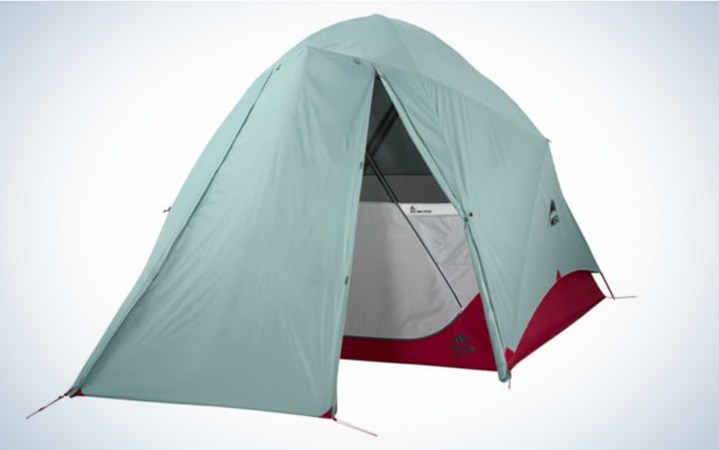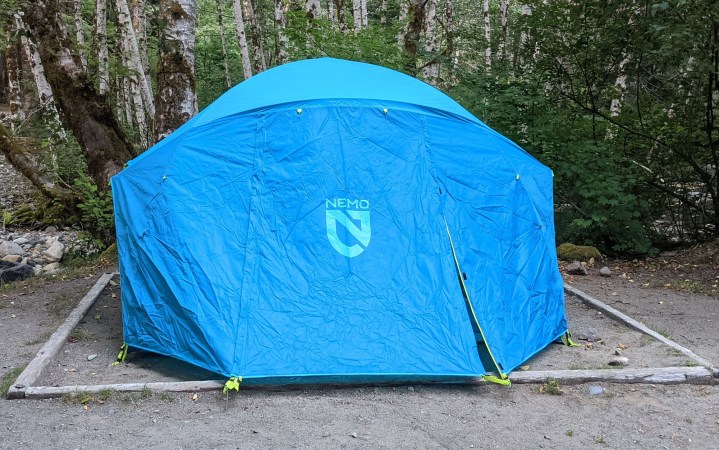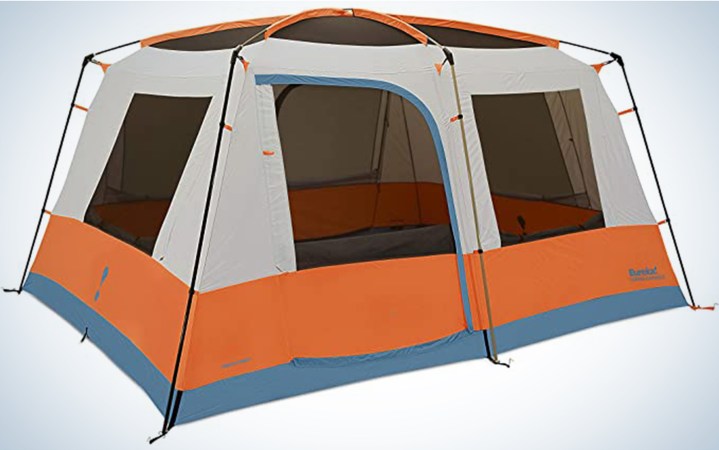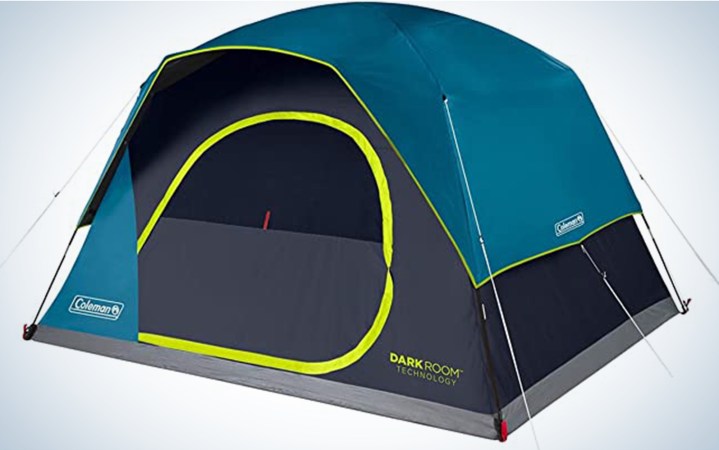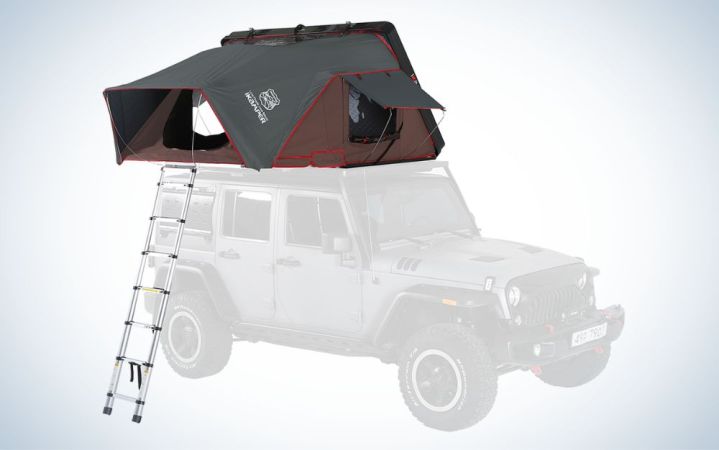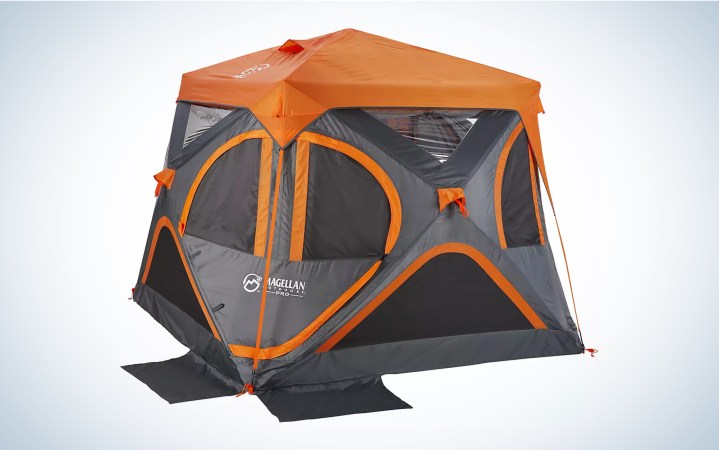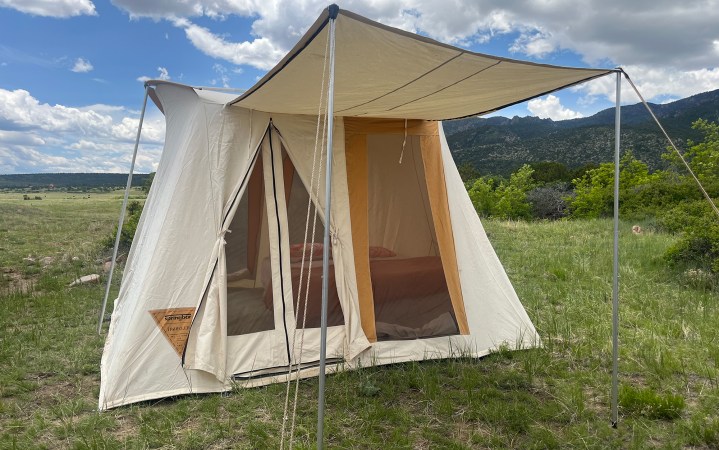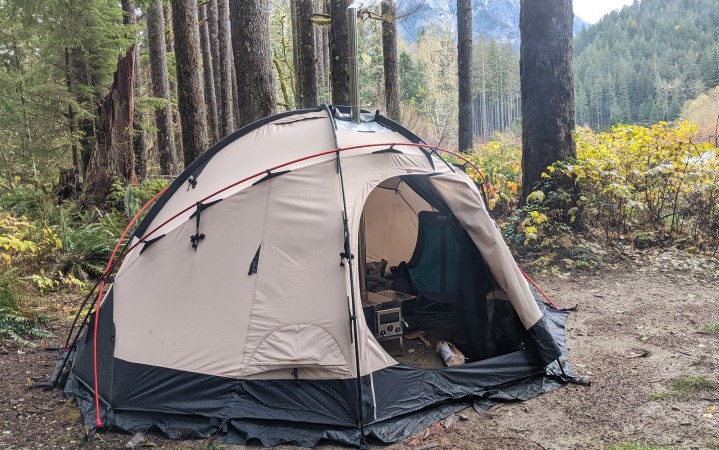We may earn revenue from the products available on this page and participate in affiliate programs. Learn More ›
Whether you are gearing up for your first overnight or upgrading your existing camping tent, there are a lot of choices to sift through. Outdoor Life has been testing camping and backpacking tents for years on trips both big and small. To help you choose the best camping tent we’ve rounded up a number of our favorite picks here, plus a few new models that should be on every camper’s radar.
- Best 4-Person: MSR Habiscape
- Best 6-Person: NEMO Aurora Highrise 6P
- Best 8-Person: Eureka Copper Canyon LX8
- Best for Light Sleepers: Coleman Dark Room Skydome
- Best Rooftop: iKamper Skycamp 2.0
- Best Instant: Magellan Outdoors Pro SwiftRise 4-Person Hub Tent
- Best Canvas: Springbar Traveler
- Best Hot Tent: Nortent Gamme 6
How We Tested the Best Camping Tents
I have camped in hundreds of campgrounds across North America in conditions ranging from exposed desert to temperate rainforest to packed snow. In that time, I’ve camped solo, shared tents with a significant other, and a four-year-old kid that started camping when she was six months old. I drew on this wealth of experience to help determine which camping tents work best for different purposes.
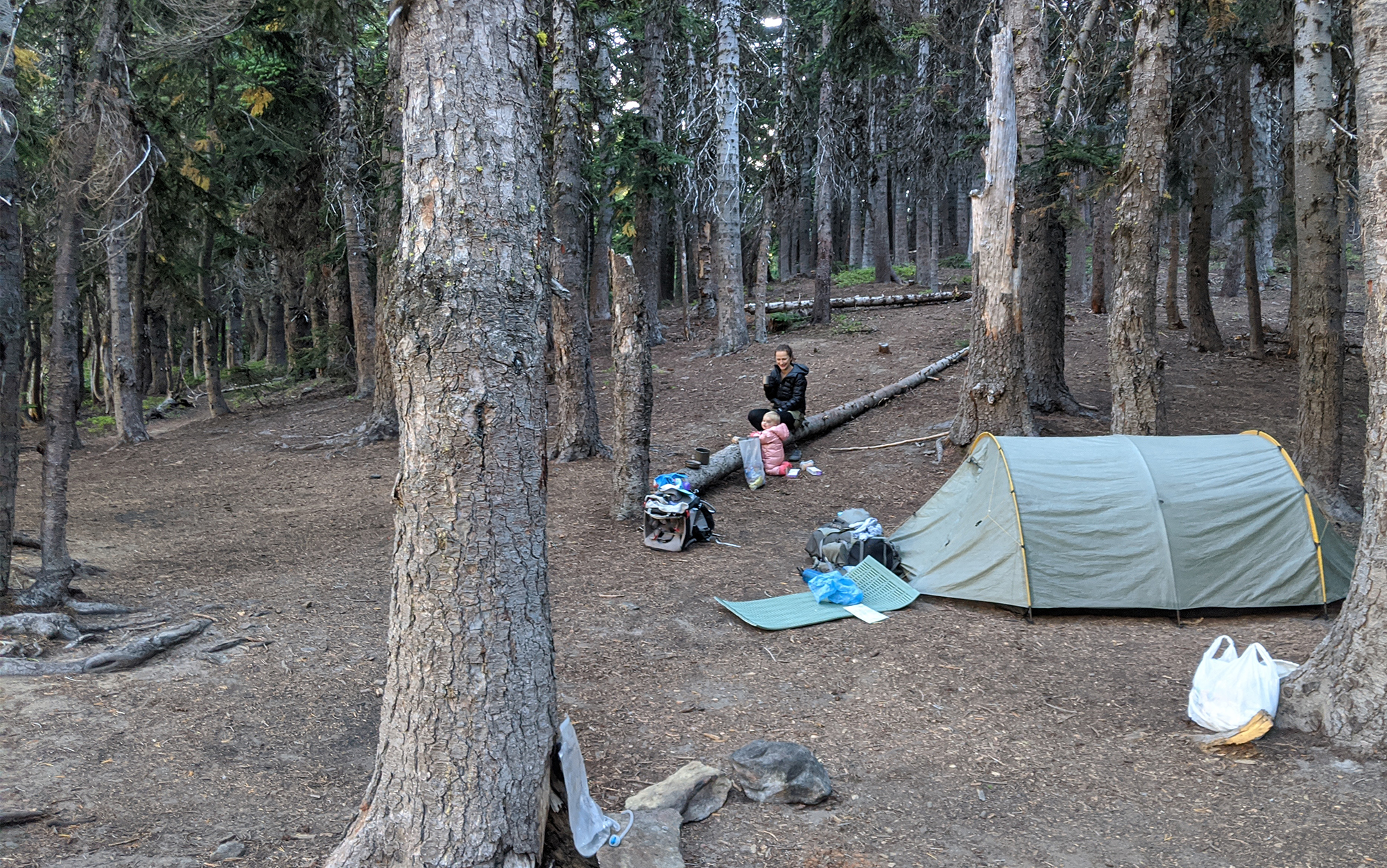
For this story, I looked at a number of in-depth tests that Outdoor Life has done in the past, including the best 6-person tents, the best 8-person tents, the best rooftop tents, the best instant tents, and the best canvas tents. I also tested a slew of other models from Mountain Hardwear, Decathlon, Heimplanet, and more.
The Best Camping Tents: Reviews & Recommendations
Best 4-Person: MSR Habiscape
Key Features
- Also available in a 6-person model
- Poles: Six
- Doors: Two
- Peak interior height: 73 inches
Pros
- High ceiling height extends around the tent
- Great stuff sack
- Designed to handle inclement weather
Cons
- Smaller vestibule than other 4-person tents
The MSR Habiscape is one of those tents that doesn’t look like much when you first set it up, but the longer you spend with it, the more it starts to grow on you. It starts with the headspace — plenty enough for this five-foot-five gear writer to stand up in, not just at the center, but also along the sides and at the doors. Then there are the pockets — 10 in total — including two that can be accessed from outside the tent (no more taking off and putting on your rain jacket and shoes just to store the car keys).
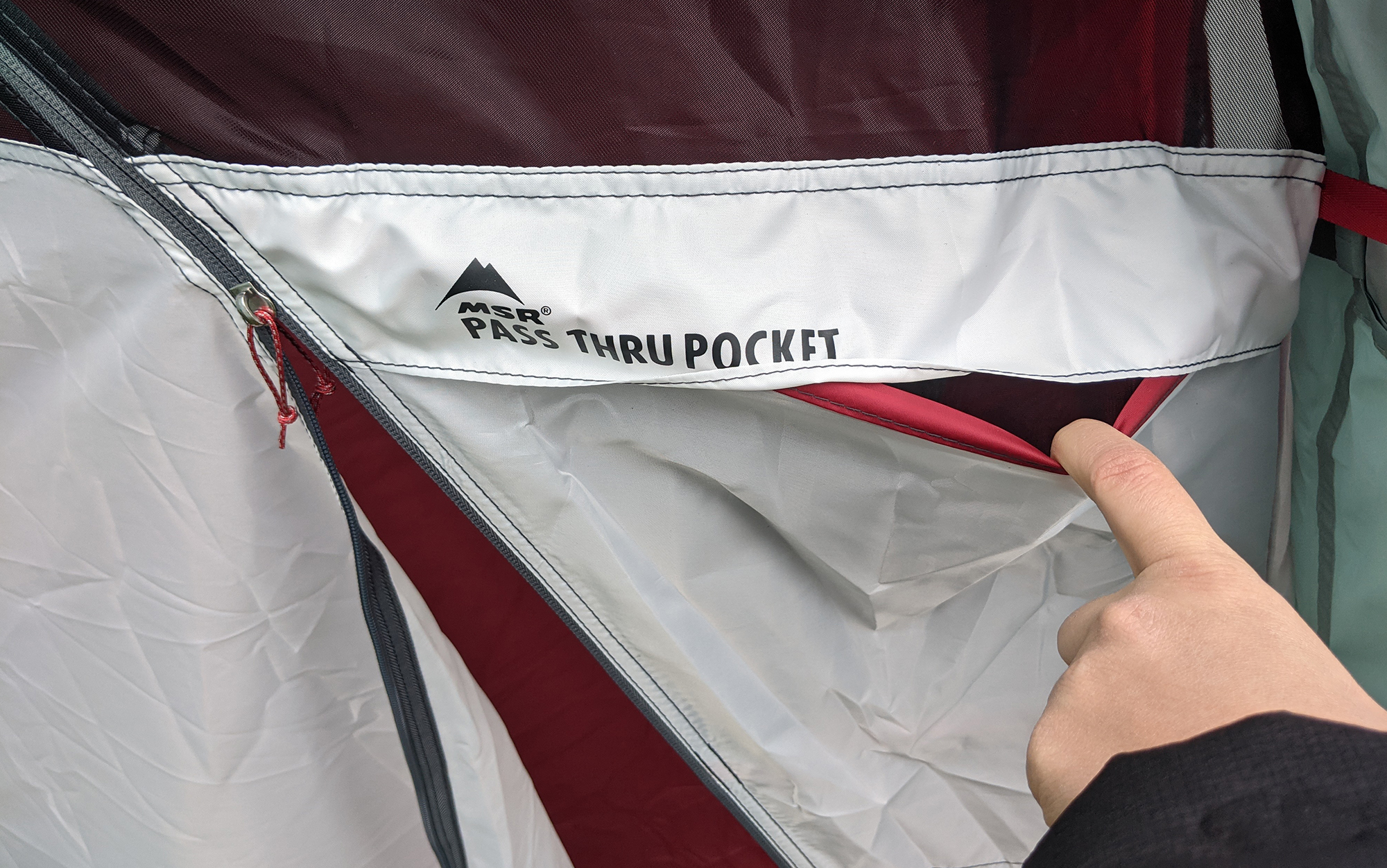
But what really stood out on my windy testing day was the structural integrity of this tent. Like most tents of this type, it has two long poles that crisscross at the center to create its basic structure. What’s different here are the four additional shorter poles that connect the upper portion of the four walls together (these go up very fast compared to most tent poles). When I pushed against the sides and the ceiling there was barely any give, and the winds made very little impact, even without the guylines set up.
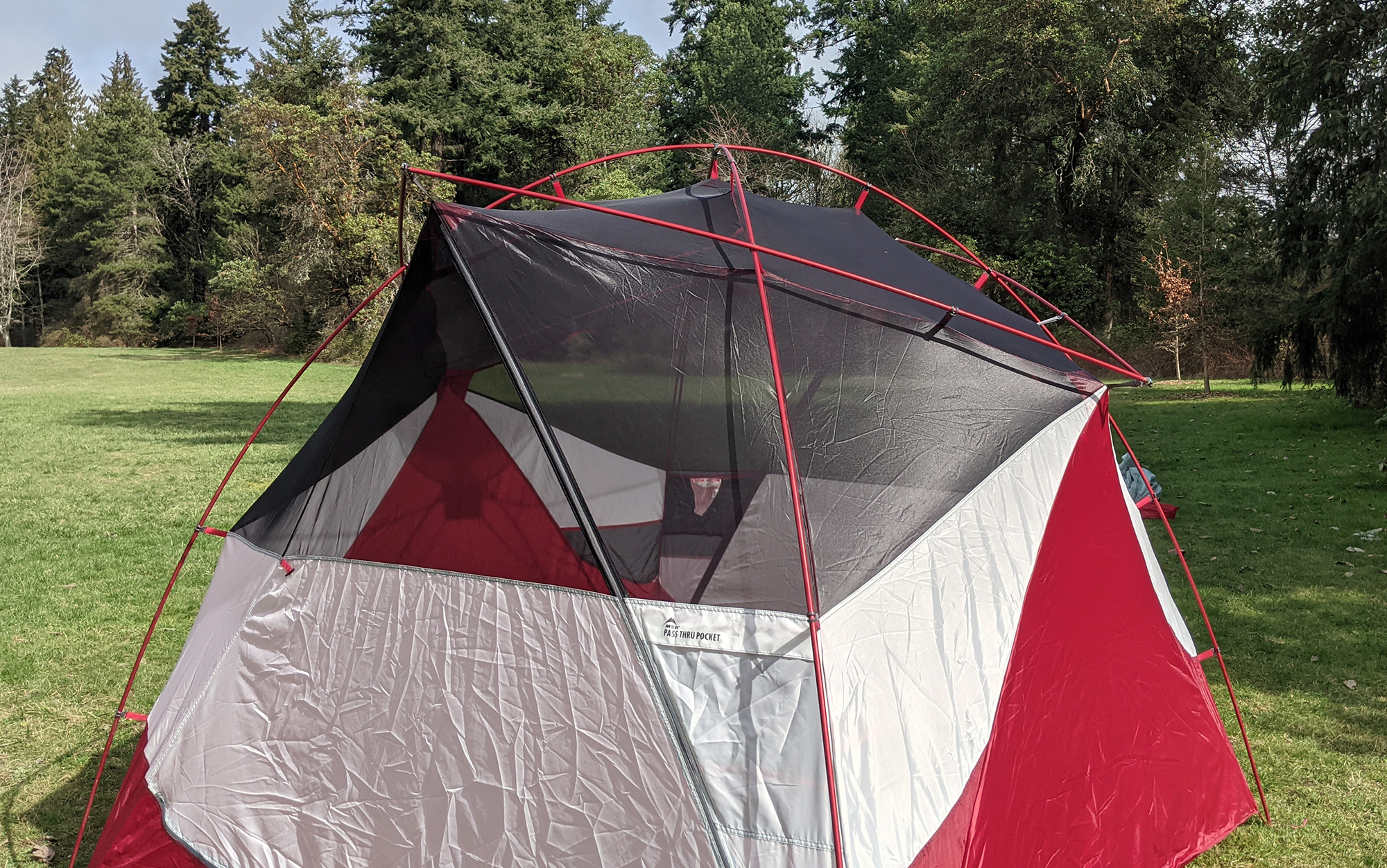
Finally, the stuff sack was great. That might seem like an unimportant detail when you are first setting up your tent, but when it’s time to pack away at the end of the weekend — the rainfly soaked from an overnight shower, dirt stuck to the bottom of the body — the excellence of the stuff sack becomes clear.
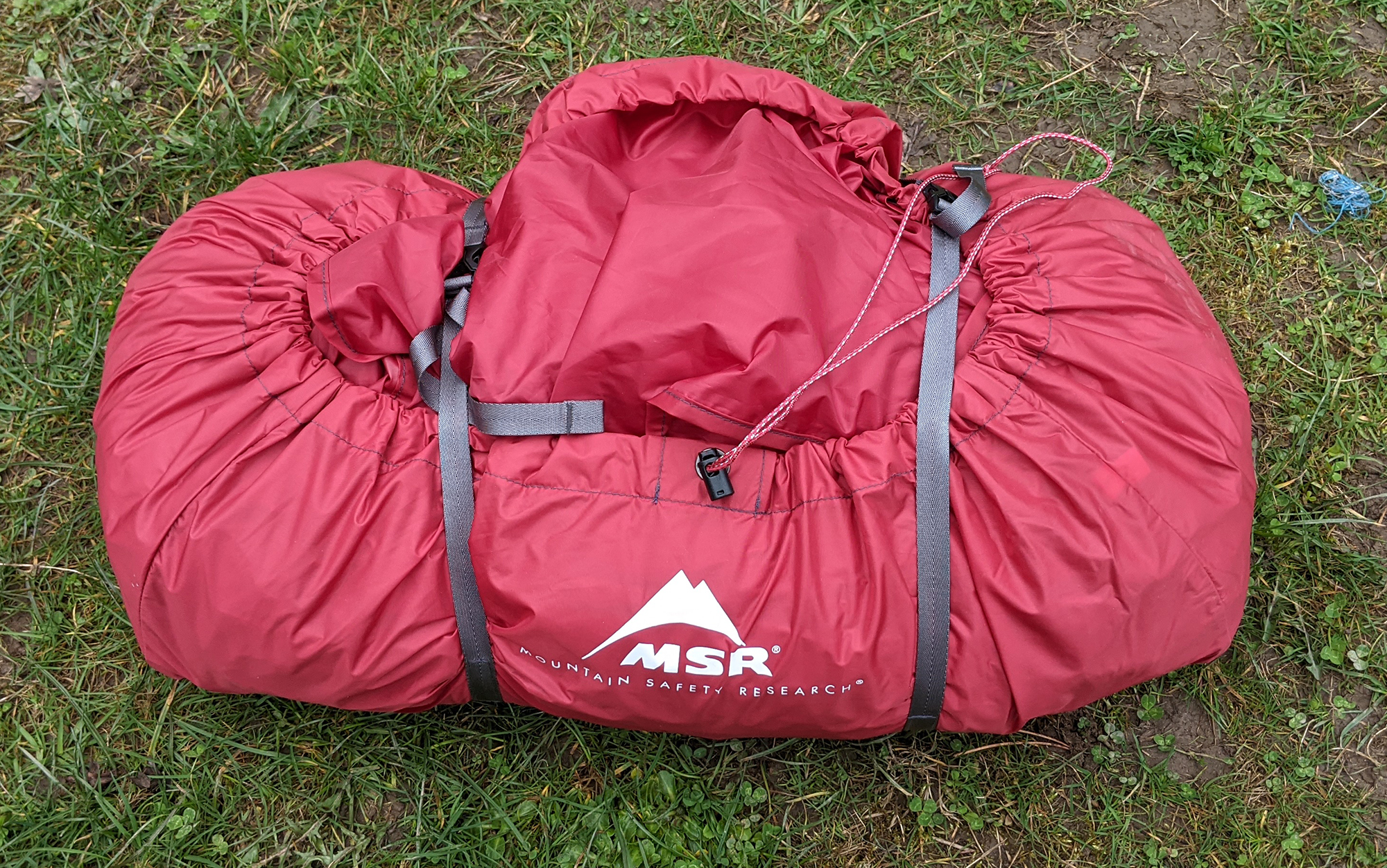
While most tent stuff sacks open at the end, the MSR Habitude stuff sack opens along the side. After a drizzly morning of testing, instead of carefully rolling up the tent into a cylindrical burrito, I simply stuffed the rainfly and body in as best I could, shoved the stake and pole bags on top, cinched the cord and tightened the compression straps. It wasn’t pretty, but it was now ready for transport with a minimum of hassle (naturally, I dried it properly at home).
Best 6-Person: NEMO Aurora Highrise 6P
Best Overall
NEMO Aurora Highrise 6P
Key Features
- Weight: 18 pounds, 10 ounces
- Floor Size: 100 x 120 inches (83.3 square feet)
- Headspace: 77 inches
- Doors: Two
- Poles: Four
Pros
- Easy one-person set up
- Plenty of vestibule space
- Great headroom across the interior of the tent
- Spacious floor design allows for different configurations
Cons
- Window closure mechanism is not as secure as it could be
- The blue interior color is very intense
I barely remember setting up the NEMO Aurora Highrise 6P Tent, which is about the highest praise I can offer. Insert the two longest poles through the crisscrossing sleeves, anchor them into the grommets at opposite ends, and secure a handful of tabs to pull the body taut. Two more poles go long ways across the tent to maximize headspace in the interior. Somewhere in the middle of this, I was called away from tent testing to read a chapter of Captain Underpants, but it was easy to just pick up where I left off when I managed to disentangle myself again.
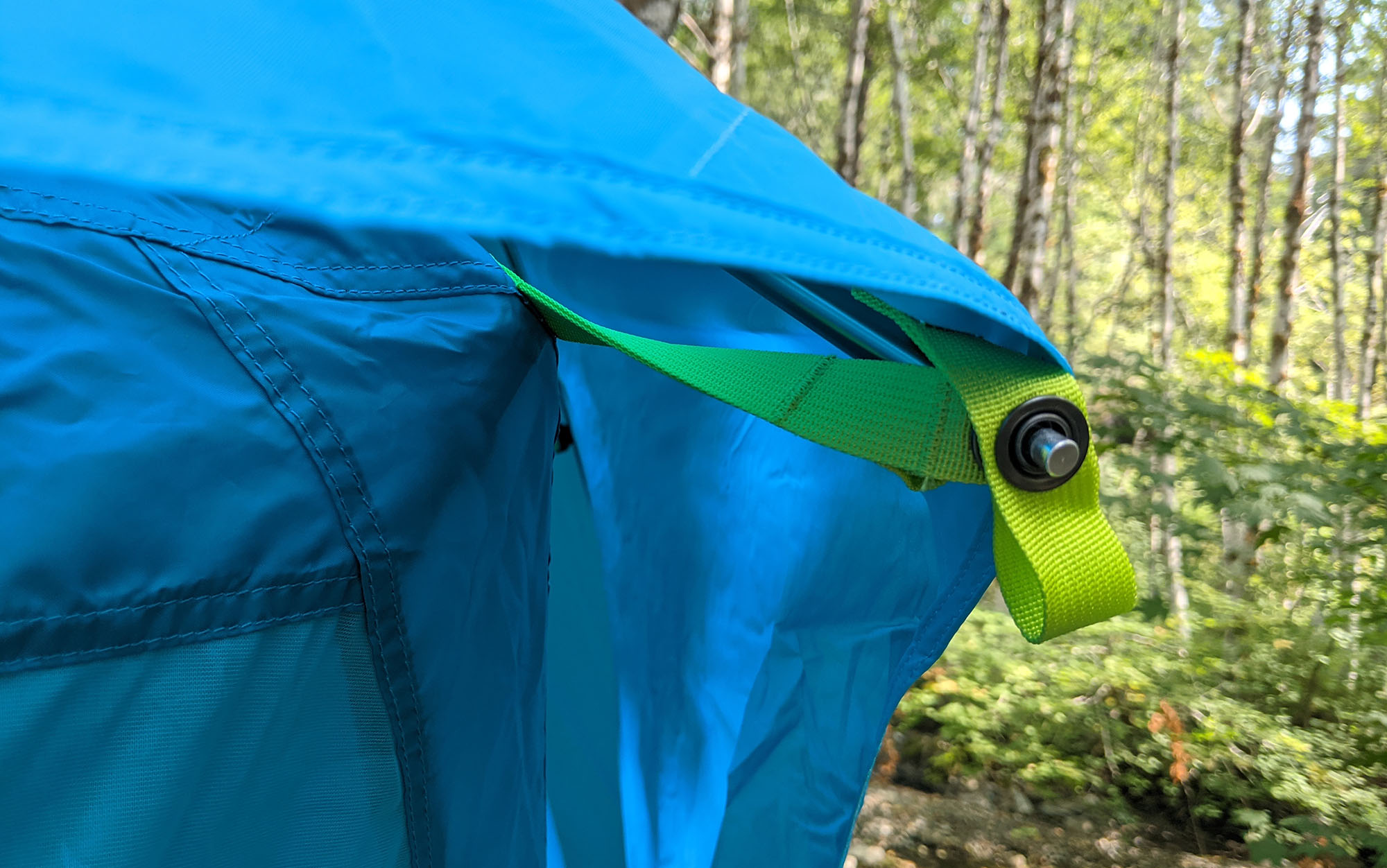
Something that proved a real struggle with the best 8-person tents was putting on the rainflys single-handed (I’m 5-foot-5). This wasn’t an issue for the NEMO Aurora Highrise 6P Tent, as the corners of the rainfly are color coded to the corners of the tent, so once I had thrown it over the top, I could just walk it around until they were correctly lined up.
Something nice about the NEMO Aurora Highrise 6P Tent was that the two lengthwise poles attached to the rainfly, and were pretty taut (although not unnecessarily difficult to get into place), which helped to keep the rainfly off of the body of the tent. That ended up being extra important as the ground at my testing site turned out to be fairly difficult to stake into.
On the tent pads, the ground was firm but pliable — ideal for staking in — but everywhere else it was very compacted, and virtually impossible to get more than an inch in. This is a common scenario for car camping these days, so I was curious to see how the tents would handle the less than ideal staking situation. But I was less worried about my poor staking job with the NEMO Aurora Highrise 6P Tent because of the taut structure provided by the poles and fly alone.
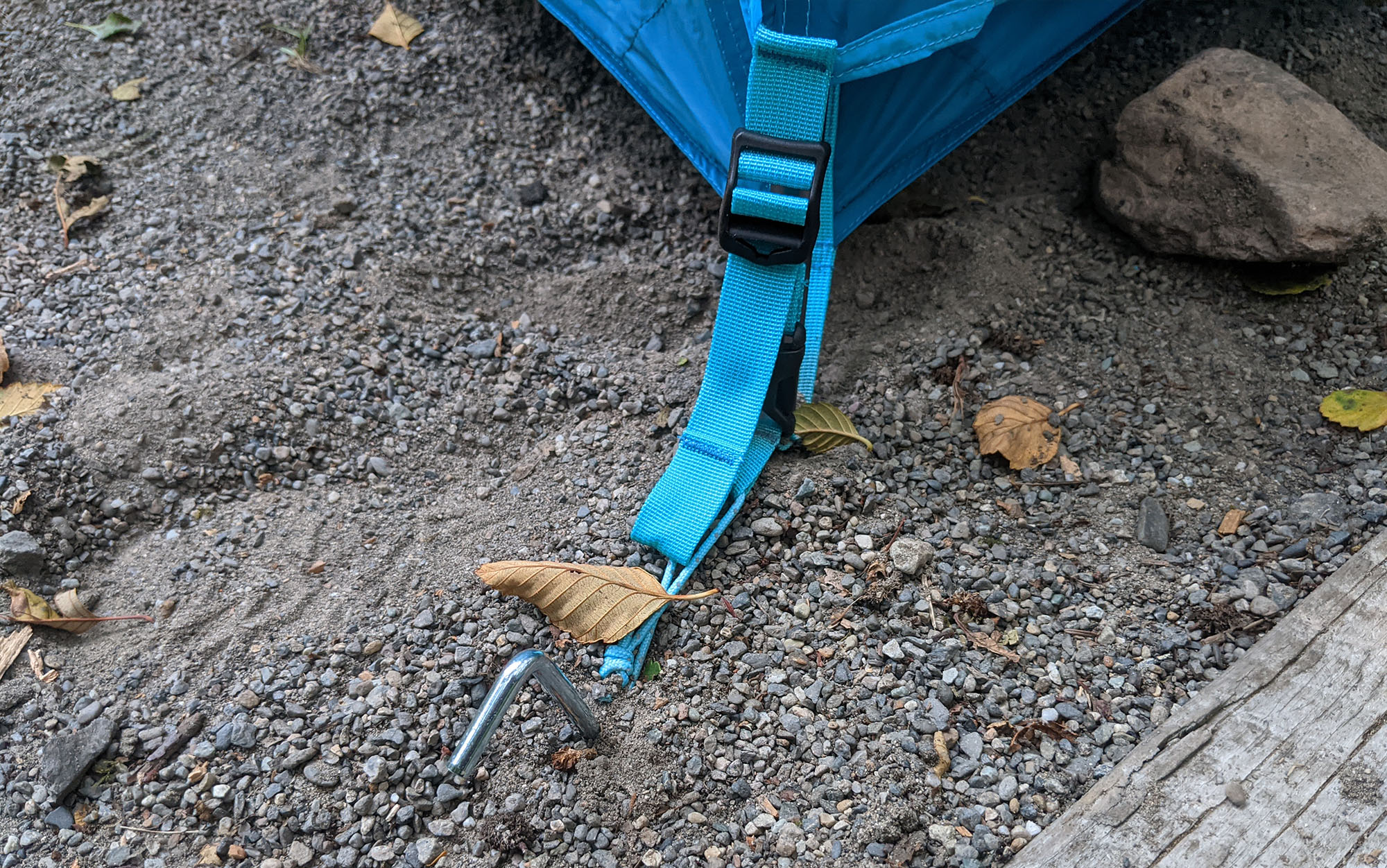
Because of the security of the rainfly, the kiddo and I chose to spend the night in this tent. Well, that’s why I chose it: She liked the color. The bright glowing blue of the interior is perhaps the most memorable (and divisive) part of this tent. It’s very blue. I can see why the kid found it cheery. It does offer the impression of a bright sunny day, even as the clouds rolled in — PNWers may be reminded of an infamous Pemco commercial. Unfortunately, that means it also washes out all other colors. Personally, I might have chosen a different color if NEMO offered one (they don’t, currently).
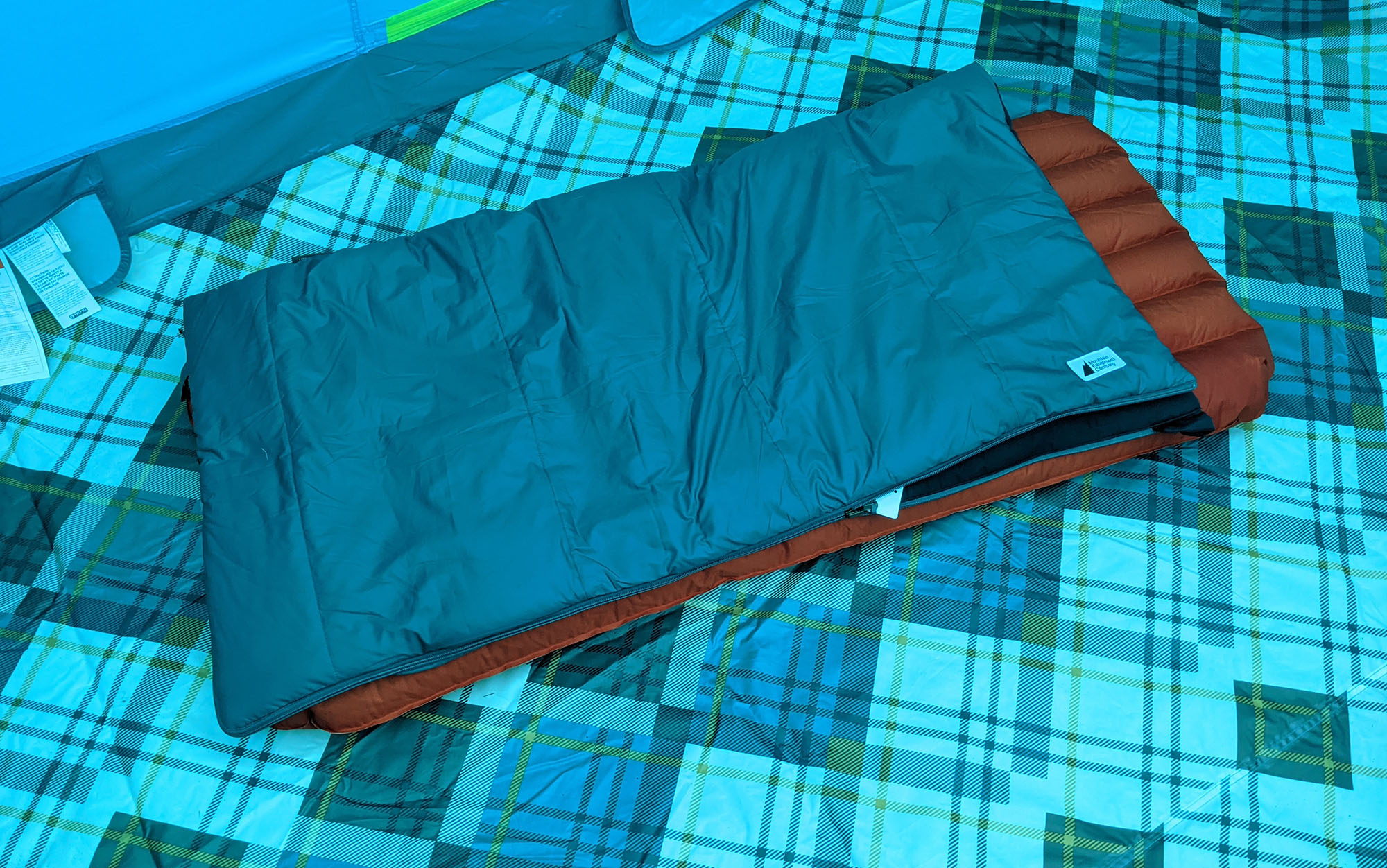
I hung up one of the best camping lanterns (the chunky Goal Zero Lighthouse 600) from the loop at the center of the tent while the kiddo and I were getting set up for bed, leaving it at the lowest lumen setting while we slept overnight (“so it doesn’t get too spooky” per the 4-year-old). Somehow, she slept right through the night without issue. I, on the other hand, woke up to an unusually serious thunderstorm. Rain was dumping. The sky was booming. The camping lantern didn’t move an inch. The tent held taut against the rain. I spent some time considering the relative distance between our location and the actual lightning strikes (no camping tent is going to protect you from a direct hit), but once I was comfortable it wasn’t headed our way, it was easy to fall back asleep again. I just felt safe in this tent.
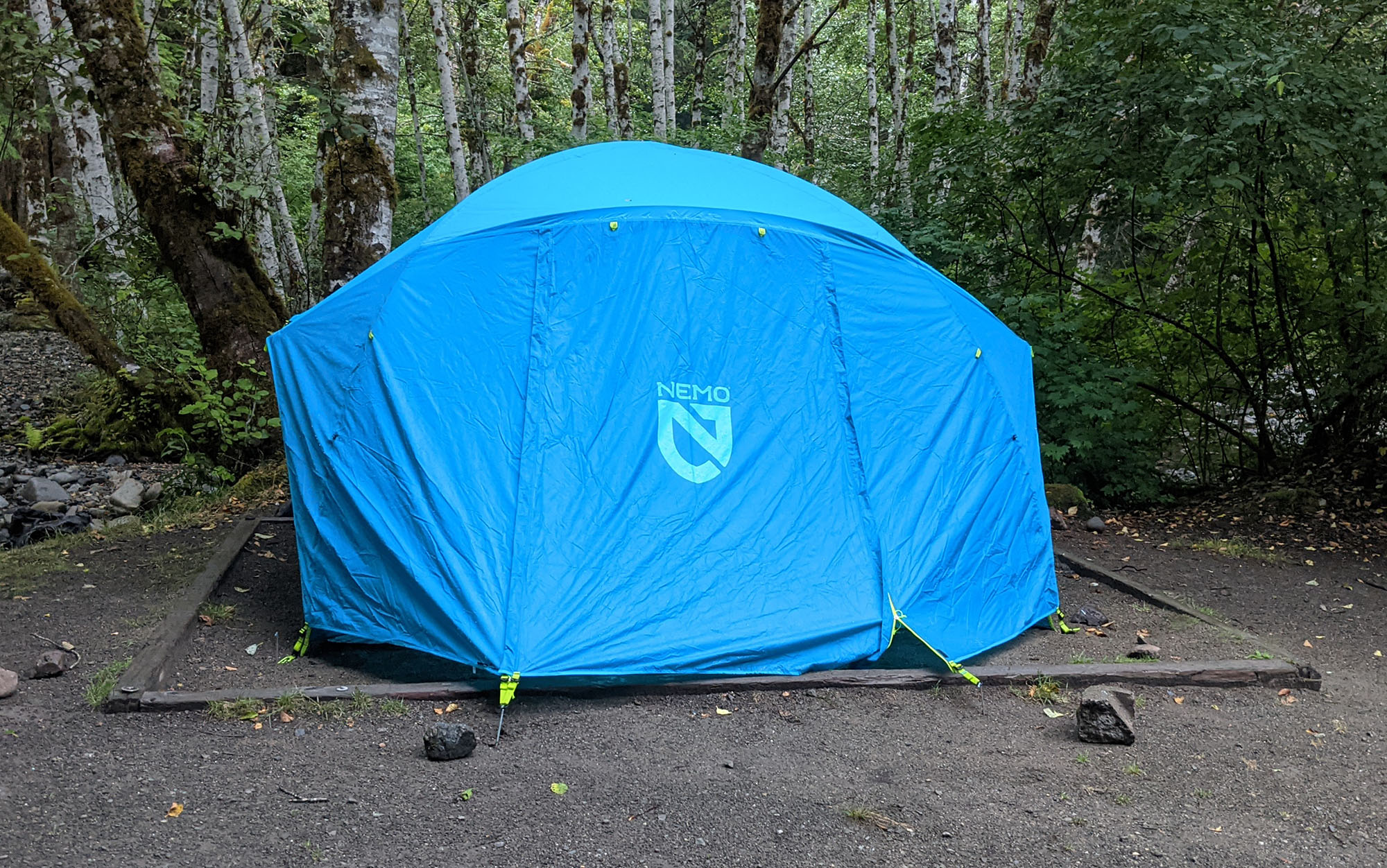
Beyond the blue coloring, my only other concern with this tent was the windows at the side. They close up from the inside with a simple toggle mechanism. While this wasn’t an issue with a straight up and down rainfall (the rainfly covers it by a few inches), in a storm involving both rain and wind, this could prove to be a failpoint.
Best 8-Person: Eureka Copper Canyon LX8
Best 8-Person
Eureka Copper Canyon LX8
Key Features
- Dimensions: 13 feet x 10 feet
- Height: 7 feet
- Weight: 33.5 pounds
- Poles: 10
- Packed Size: 11 inches x 29 inches
- Doors: Two
- Windows: Six
Pros
- Great livable space on the interior
- Withstood both rain and wind on the testing trip
- Lots of doors and windows
Cons
- Most complicated setup in my test (fortunately the provided instructions were easy to follow)
- Heavy
The winner of OL’s best 8-person tents test was hands-down the Eureka Copper Canyon LX8. While it wasn’t the easiest to set up, it provided superior weather protection at an affordable price point — and had great head space. It has six windows and two doors (so excellent ventilation) along with near-vertical walls that my over 6-foot testers could stand up under with room to spare.
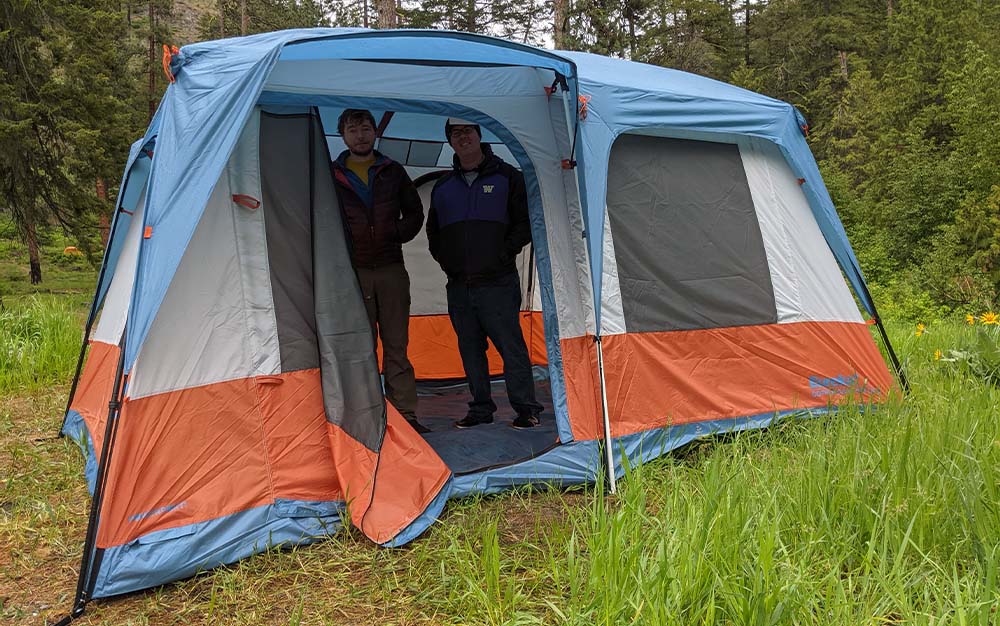
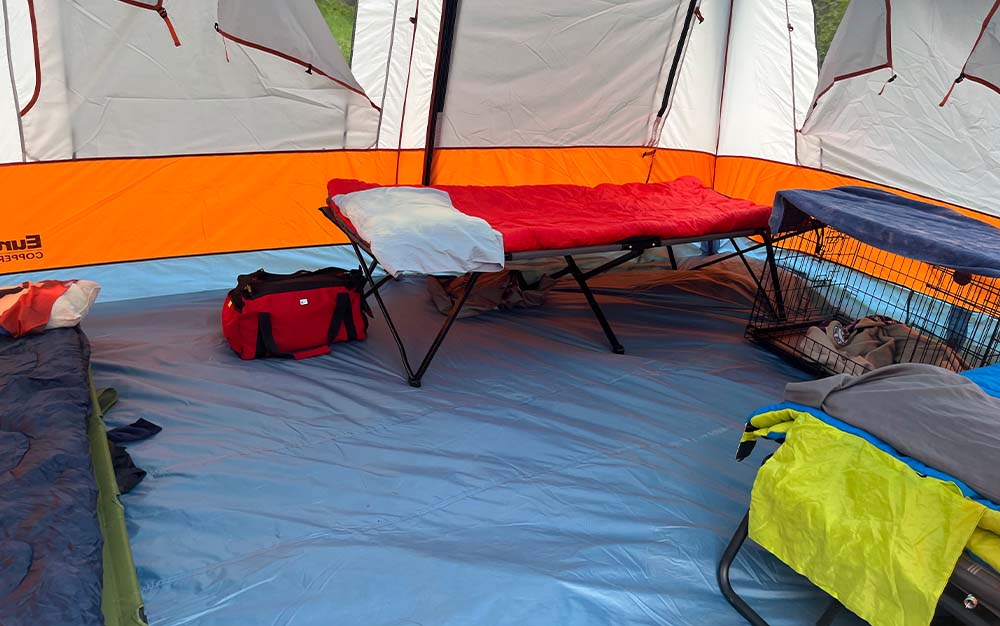
While the strongest winds during testing buffeted the sides of this family tent, it bounced back quickly without damaging the fiberglass poles. At one point the rainfly came unattached at a corner, but after a member of the testing group re-secured it with the provided velcro tabs (which I forgot to do during the initial setup), it wasn’t a problem. And the rainfly turned out to be plenty of protection against overnight rain once the windows were zippered up.
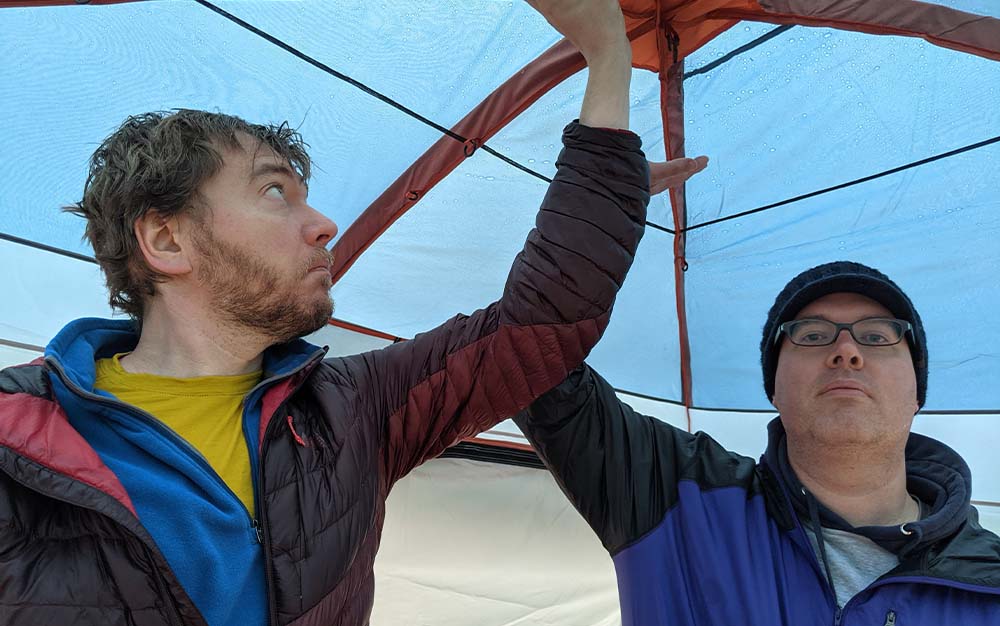
The only downside to this tent is that it is an unusually complicated setup. Three fiberglass poles crisscross the ceiling and then connect to six steel poles at each end to form the walls (the tenth pole creates the awning over the doorway). The directions for this were reasonably easy to follow — it just took a while. While I was able to set up the body of this tent by myself, a second (taller) person was needed to add the rainfly.
Best for Light Sleepers: Coleman Dark Room Skydome
Best for Light Sleepers
Coleman Dark Room Skydome
Key Features
- Available in 4-person, 6-person, and 8-person models
- Poles: Three
- Doors: One
- Windows: Zero
Pros
- Dark interior is perfect for midday naps or camping during the summer solstice
- Reasonably easy setup
- Affordably priced
Cons
- Smaller than other tents with the same claimed capacity
If you’ve ever planned to sleep in while camping, then woken up as soon as the sun hits your tent at five in the morning, then the appeal of the Coleman Dark Room Skydome is pretty clear. In the middle of the day, with the sun brightly shining down on you, you can go inside this tent and it’s pretty close to pitch black. Just a small amount of light sneaks in at the corners and around the edge of the door. It’s also much cooler than comparably enclosed tents.
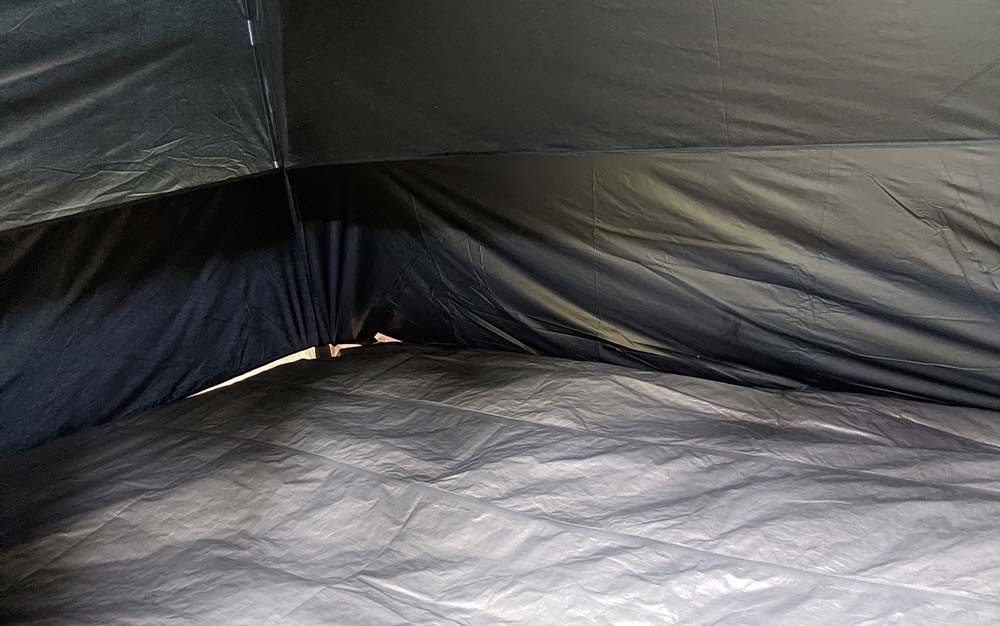
This tent (I checked out the 8-person model) was also fairly easy to set up. The two main poles, which are attached to the far corners of the tent, simply crisscross over each side — a super simple design that will be familiar to anyone who has ever used a 2-person tent. Unfortunately, this design also comes with some limitations. The so-called 8-person model is only 108 square feet. I would not recommend trying to squeeze more than four people in this tent, maybe five if you are exceptionally good friends. It also buffeted in the wind fairly significantly, although the fiberglass poles survived the encounter.
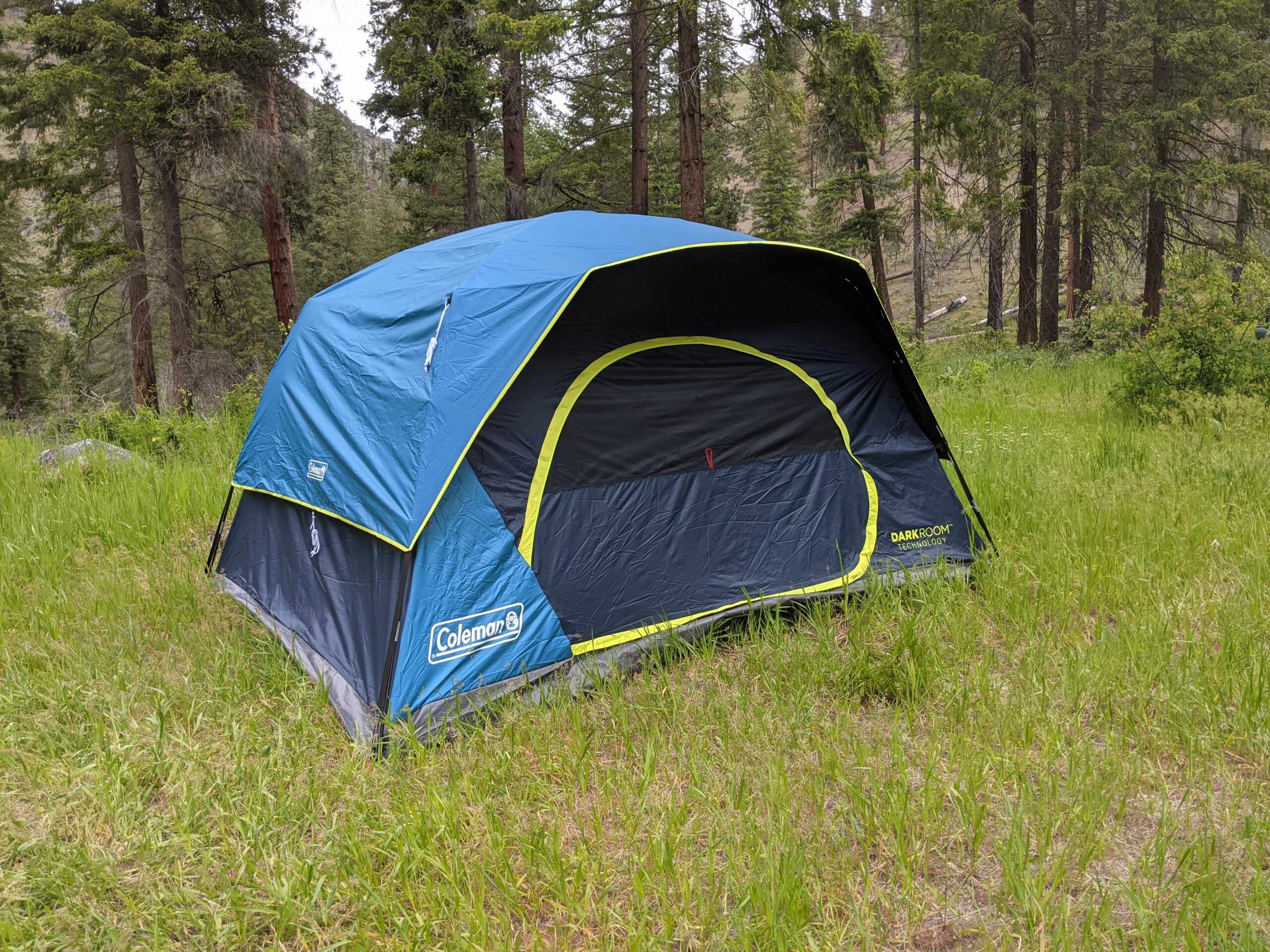
The final pole — a separate fiberglass section that holds the rainfly out over the door was surprisingly difficult to figure out, as there is very little indication on the tent where the sleeve opening is. I also noticed during breakdown that the attached poles made squeezing this tent back in its carrying case a little more complicated than tents where this isn’t the case, although it ultimately fit without too much of a struggle.
Best Rooftop: iKamper Skycamp 2.0
Best Rooftop
iKamper Skycamp 2.0
Key Features
- Hardshell case
- Sells for around $3,700
- Weighs 160 lbs.
- Can sleep up to four people
Pros
- Universal mounting system allows it to fit on most vehicles
- King size memory polyfoam mattress
- Easy one minute set-up time
- Multiple layers allow for easy window access during the day and a dark and secure tent at night.
- Four season tent
Cons
- Heavier than other tents and therefore not for all vehicles
The winner of the OL test of the best rooftop tents was the iKamper Skycamp 2.0 roof top tent, which is both a great introduction to roof top camping and a longtime mainstay on the market. The sleek design, spacious tent, and tough shell make the Skycamp a very popular option.
I drive a Subaru Forester, which pushes the weight limit to the threshold, but it’s still below the maximum, making my vehicle not the best choice for this tent, but still doable. Installation of the tent is effortless as long as you have help lifting the 160-pound tent onto your roof rack. From there you just tighten four screws and your tent is secure.
When driving with the tent, you’ll notice some shifting from the wind and the added weight on your roof. It’s also recommended you watch your speed while driving. But, once I got used to it, I hardly noticed it on my car.
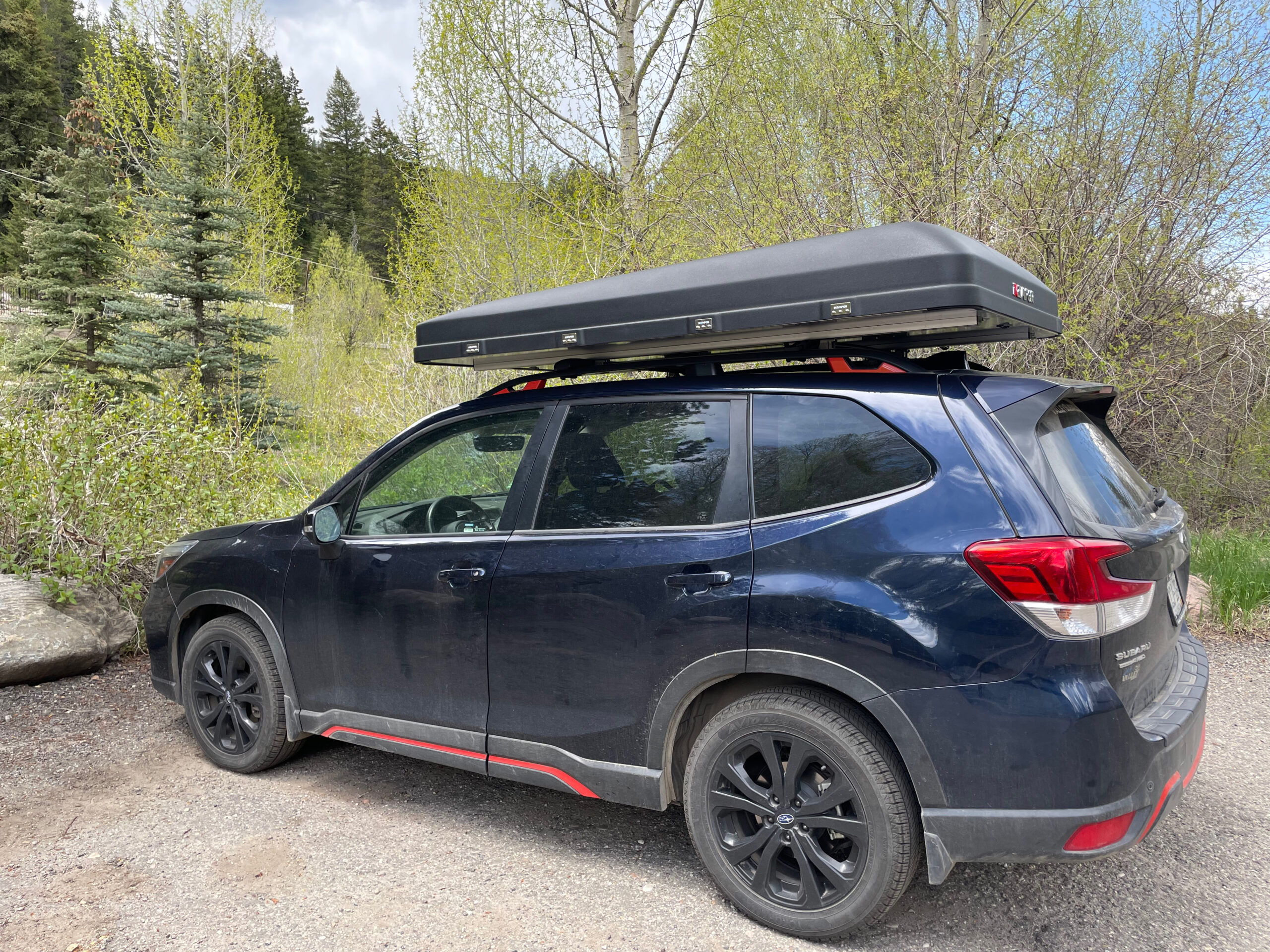
Once arriving at the campsite, the Skycamp 2.0 lived up to the hype of an easy setup. Upon opening the box, the tent pops open, and you’re left only with propping up the doorway and windows. Getting in and out of the tent is easy with the included ladder, which also acts as a stand to keep the tent up. Multiple windows and a skylight also allow plenty of light and airflow throughout the tent.
I spent multiple nights in the tent, both solo and with my wife and toddler. Solo, you have more than enough room for just about anything, but even with two added people, the tent still felt massive inside. Inside the bed, there is a polyfoam king-size mattress taking up the entire floor space as well as some storage pockets along the perimeter. The mattress is extremely comfortable and beats most standard tent setups.
I experienced a good mix of weather by camping in two different regions of Colorado and can say this is a four-season tent. The multiple layer windows allow you to close it with canvas covers, let light in through the plastic screen or leave just the mesh up for easy airflow for warmer weather. With everything closed, we were able to stay warm even with minimal layers and blankets in the canvas tent.
The biggest struggle with the roof top tent is windy weather. At one point, strong winds blew in it, and it was a struggle to get the tent closed. A few minutes of chaos were underway, but once I had the box shut, we were able to move to wait out the storm until things calmed down.
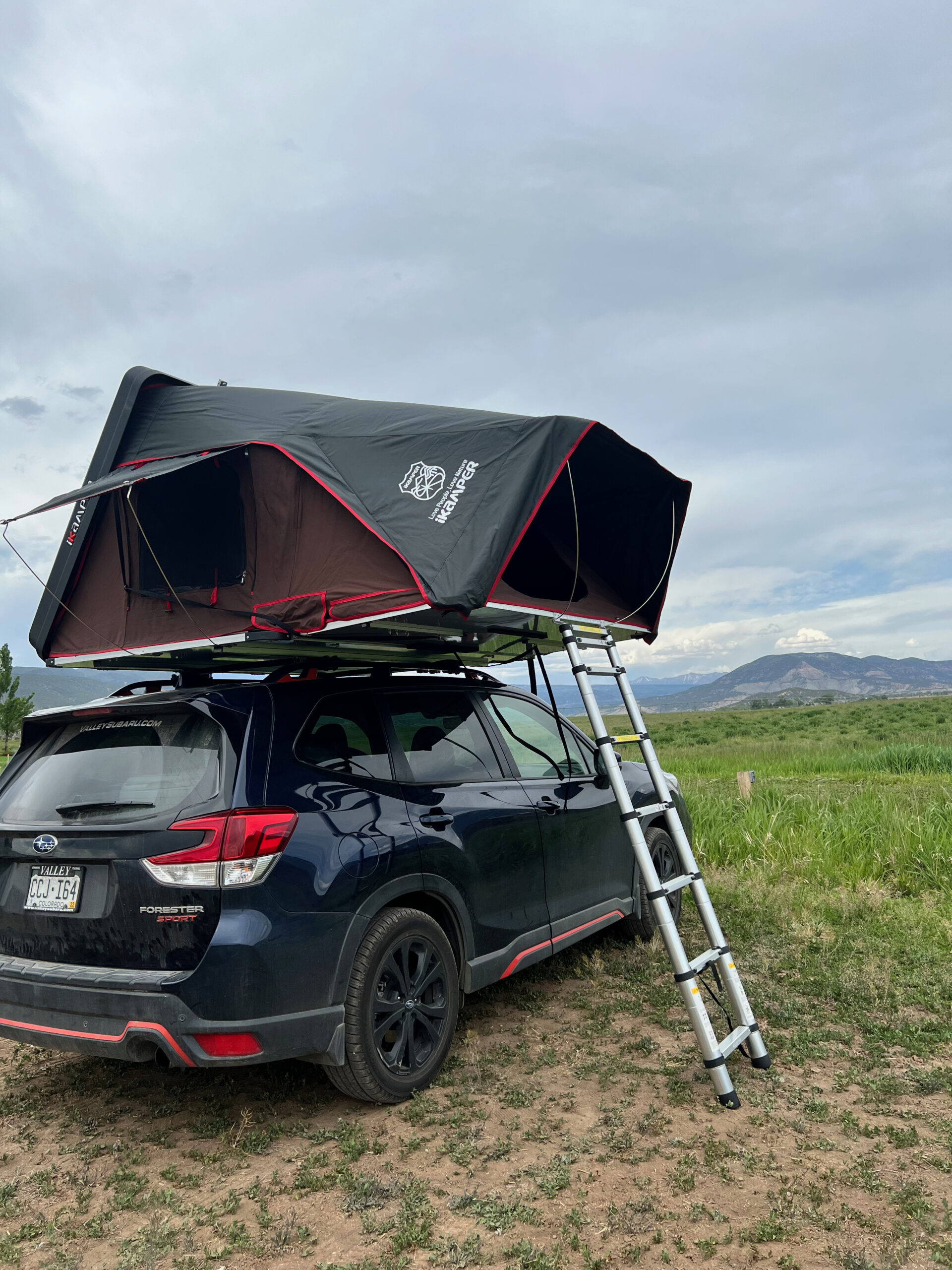
However, inside the tent, you could also feel the strong gusts overnight. I don’t believe the tent was going anywhere, and it was firmly strapped to the roof. Part of this issue may have been my smaller SUV compared to a heavier truck or jeep that could secure the tent more in place and avoid rocking from the strong winds.
iKamper recently released their Skycamp 3.0, a slightly pricier upgraded version of the longstanding popular 2.0. With it comes some improvements like a better mattress and a large hardshell box to allow for some storage such as blankets or a pillow.
Overall, the Skycamp is hard to beat, with a great setup that’s easy enough to use just about anywhere. While not nearly as large as some of these family tents, I can see the Skycamper as the best roof top tent for families or just adventure friends looking for a comfortable space option, as the Skycamp hits all the marks. It also is probably the best for cold weather options with its generous interior allowing for extra blankets while also using its thick canvas as protection. — Alex Murphy
Best Instant: Magellan Outdoors Pro SwiftRise 4-Person Hub Tent
Best Overall
Magellan Outdoors Pro SwiftRise 4-Person Hub Tent
Key Features
- Peak Height: 6.5 feet
- Weight: 24 pounds
- Adjustable ventilation
- Eight side pockets and one gear loft
- 20+ UV protection
- Integrated lighting system
Pros
- Easy setup
- Spacious for four adults
- Durable
- Interior storage space
- Adjustable windows
Cons
- Expensive
- Rainfly can blow off
- Heavy
- Not compact for long-term storage
This one-room, square tent stood out from all the rest of the tents, and will now be my go-to car camping tent. With a center height of 6.5 feet, it can accommodate even the tallest campers. Plus, the 60 square feet of floor space was more than enough to sleep four people.
Out of the box, it was a cinch to set up by deploying the ceiling into place, then pulling the four side hubs outward. It comes with too many stakes (small and large ones) to secure the edges and guy lines.
One highlight was all the windows with mesh screens and shades that can be strapped over or rolled up. Not only was the natural light welcomed, but the amount of ventilation resisted any moisture buildup. An integrated, battery-operated light system surrounds the interior roof for ample nighttime light. It has a head-level gear loft and eight pockets, offering plenty of storage options.
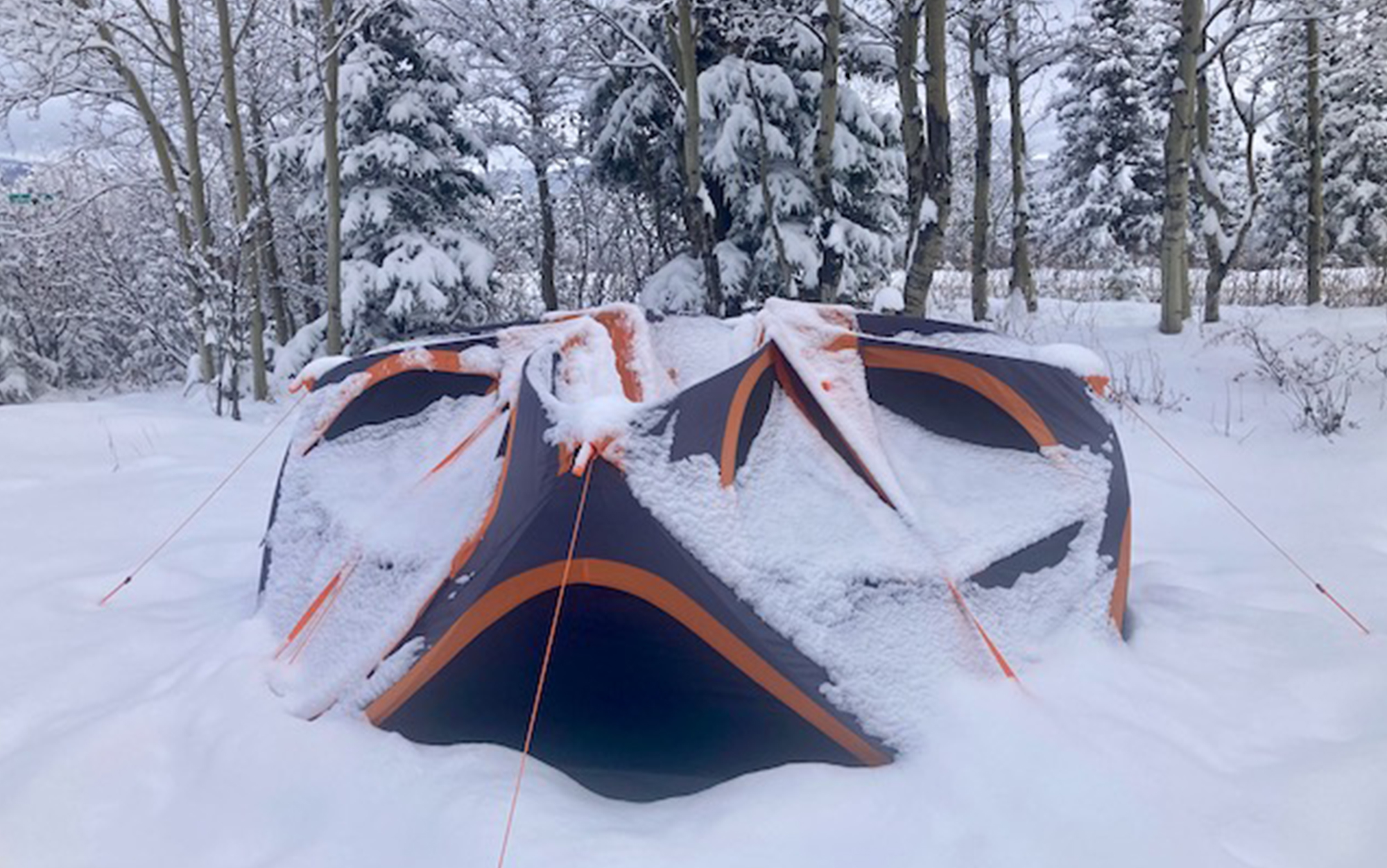
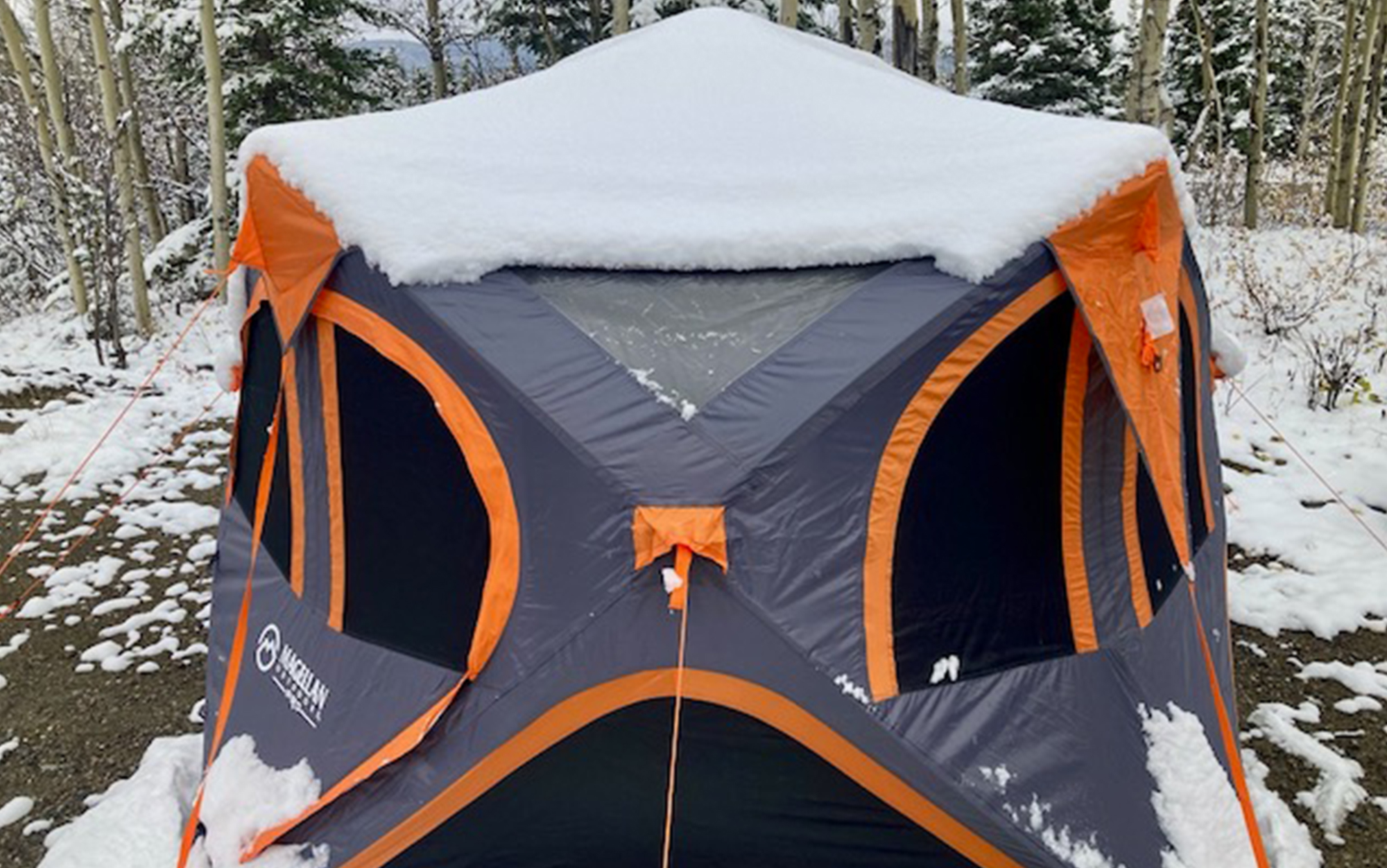
What really made this tent stand out is that it is extremely durable. I had this up for over two months in all types of weather, including 40-mph gusty winds, driving cold rain, and even wet snow. A few inches of wet snow collapsed the tent, but once I removed it, the tent sprung right back into position. The 150-denier polyester offered proven durability and protection for the contents inside.
There is an additional rain fly that attaches to the bottom of the tent, however, in the strongest winds, it can become detached. — Justin La Vigne
Best Canvas: Springbar Traveler
Key Features
- Materials: 100 percent cotton canvas
- Footprint: 10 x 10 feet
- Interior Height: 6.5 feet
- Packed Tent Size: 21 x 15 inches
- Packed Pole Size: 56 x 8 inches
- Tent Body: 42 pounds
- Pole Set: 22 pounds
- Stakes: 8 pounds
- Non-freestanding
- Price: $1,299
Pros
- Watertight
- Breathable
- Insanely durable
- No-see-um window mesh
- Made in the USA
- Waterproof floor
- One-person setup
Cons
- Heavy
- Takes a little elbow grease to put up
- Must be put away dry
Just as we finished erecting the tent, all seven of us piled in. The rain started to pour and the packed desert dirt immediately began to flood, waterfalls cascading down nearby sandstone. Parts of the floor started to trap small puddles underneath like tiny waterbeds. And the wind picked up menacingly; my friend turned to me and asked, “Are you sure this’ll hold?”
“I’d trust this tent with my life,” I said.
The last car camping tent you’ll ever buy: the Springbar Traveler. In our short four months together, this tent has withstood, rather, thrived in high desert winds, monsoons, hail, and scorching heat. The 10 by 10 footprint isn’t overly large, and the tight design takes advantage of every foot. It’s 6.5 feet tall wherever you stand. It’s extravagant for two, comfortable for four, and fits six. Though more can easily wait out a storm, as this tent is bombproof. Springbar tents are designed for high winds.
It starts with 12-inch galvanized steel wedge stakes made in Missouri. They’re secured to the tent with steel wire stake loops fixed to a rope lining the perimeter. The rope not only reinforces the attachment points, but also distributes the weight. The frame operates with tension and flex using a spring system. The aluminum poles’ interior is reinforced with steel. They fix into spring steel tension rods to solidify the tent frame. Made in Salt Lake City, Utah, these poles are corrosion resistant and the aluminum lightens the overall weight.
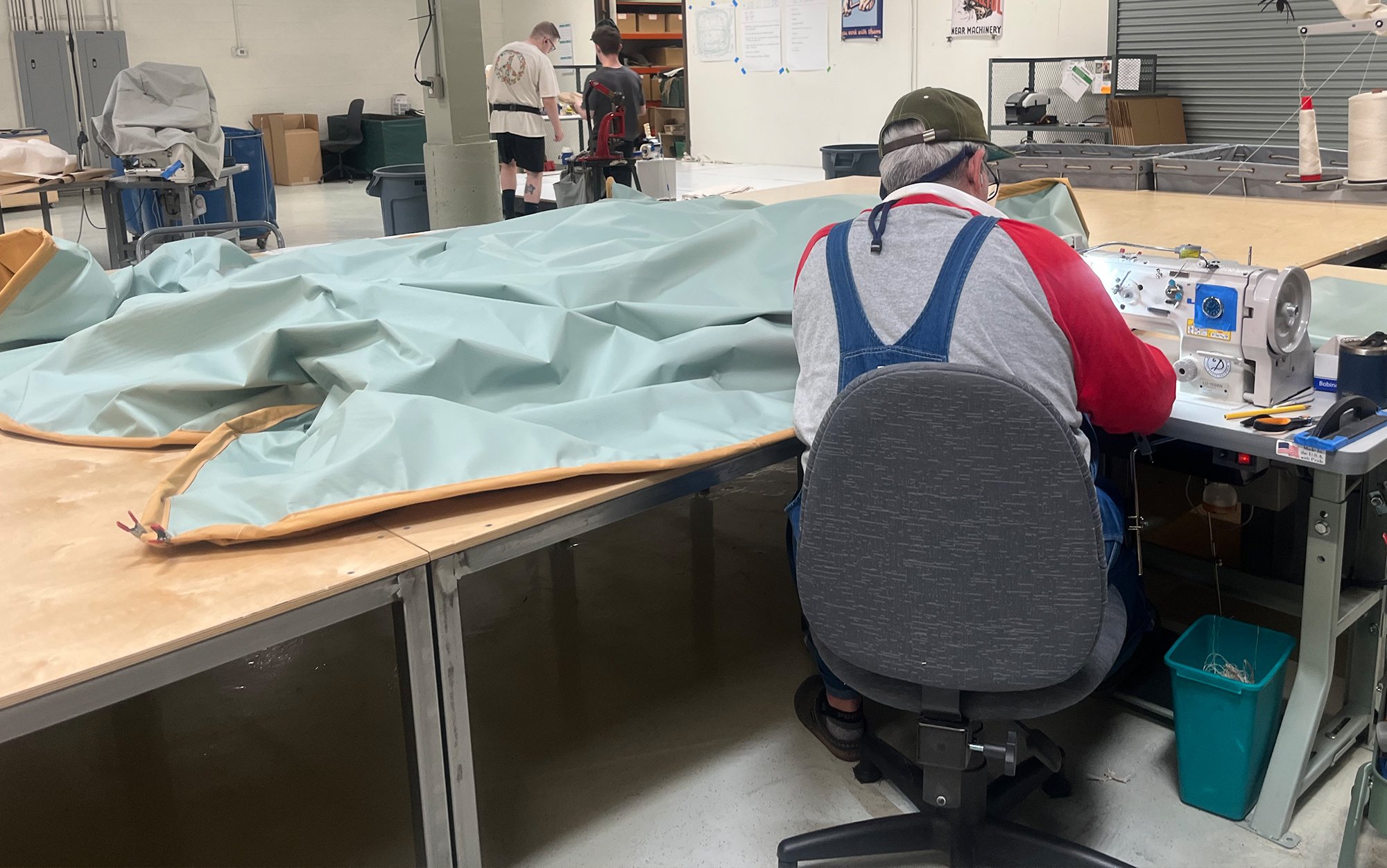
While the seamless vinyl floor is completely waterproof, Springbar tents aren’t. They’re watertight. And while that sounds like a recipe for disaster, it’s where the real magic of this tent begins. Instead of the suffocating bright colored nylon you’re used to, the 100 percent cotton canvas breathes. The Sunforger (gold-standard weather finish) treated cotton shrinks when wet and the tiny holes and seams tighten, keeping water out.
Even the three different threads used in Springbar tents are specially selected and sewn to constrict and swell with the fabric. When dry, the cotton naturally expands to create a more breathable shelter in hot weather. The three full-length no-see-um mesh windows and door don’t hurt either. In cold weather, it’s harder for heat to escape. Springbar tents are warmer in winter and cooler in the summer. It’s by far the most comfortable tent I’ve ever slept in.
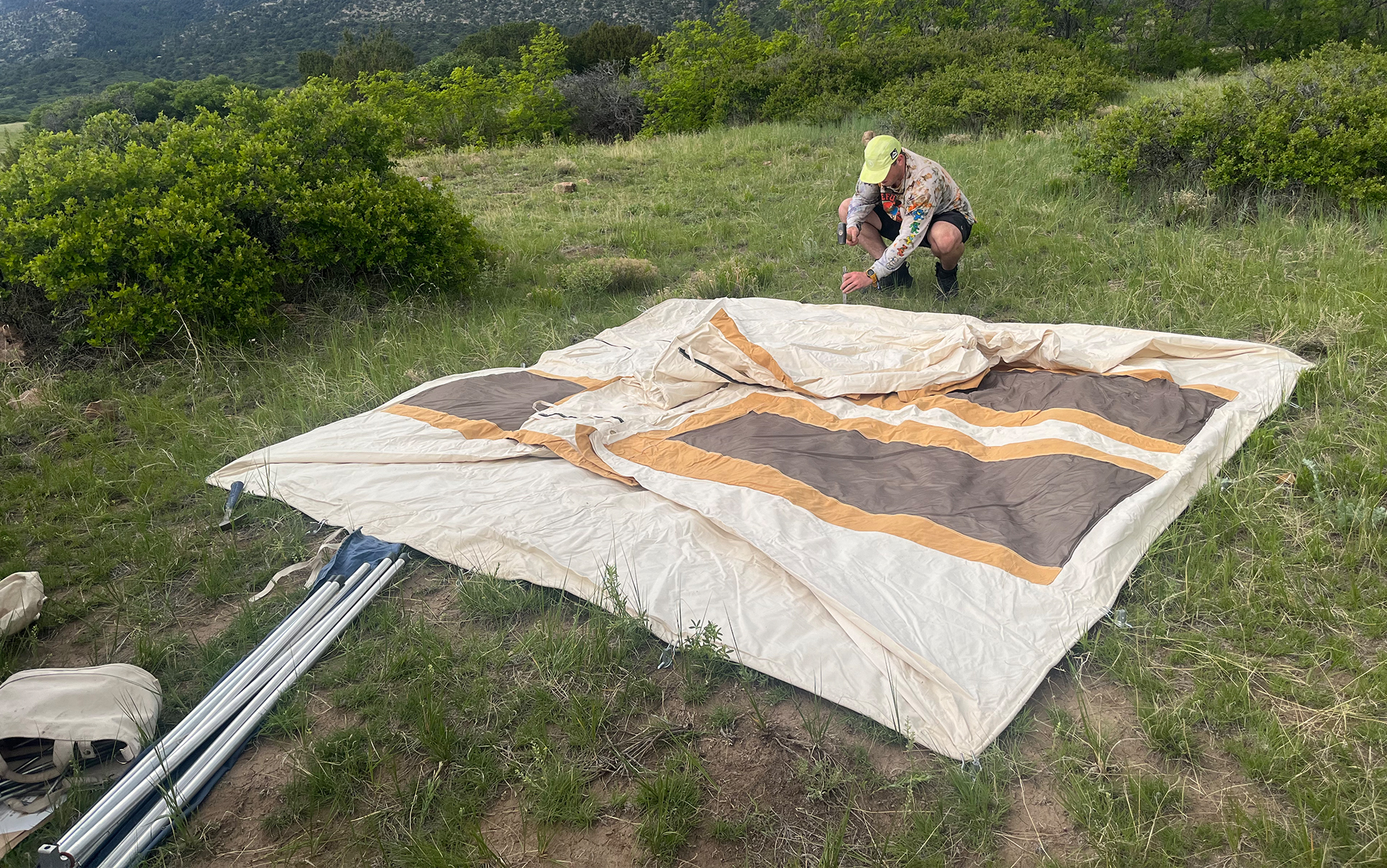
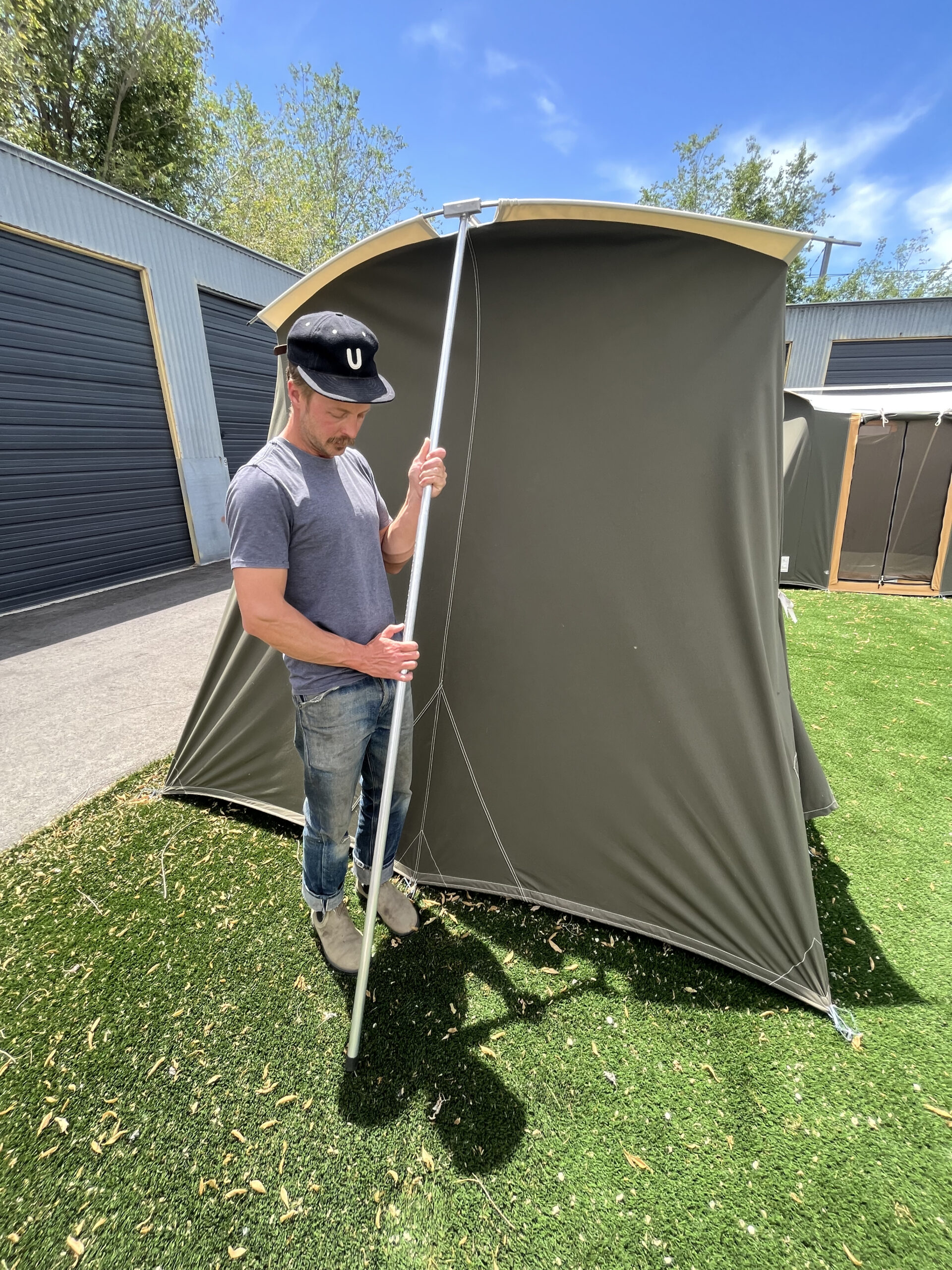
Now, you might be thinking that it takes blood, sweat, and tears to erect this bombproof tent, but you’d be wrong. I’m a 5-foot-7 female and I’ve done it by myself. The most time consuming part is hammering in the stakes, but it goes a lot faster with even one more person. Once you lodge all 20 stakes into the ground with a hammer or mallet, you’re basically done. Sure there are a couple more steps, but the hard part is over. Springbar has an excellent video showing how to put it up solo. Pro tip: Pre-align your upright poles so that you can lift directly up, instead of spinning the pole around to find the holes and lifting at the same time.

The legendary weather-resistance and Goldilocks size aren’t the only things that make the Springbar tent special. You’re stuck with it for the rest of your life. When I toured their facility here in Salt Lake City, Utah, their repairs specialist was working on a tent from the 1970s. All it needed? some new mesh. With proper care, these tents can last decades and in some cases, generations. If you do need a repair, Springbar does it all in-house at their Salt Lake City sew shop.
This tent’s only kryptonite is mold. Under no circumstances should you store this tent wet. If you’re forced to pack up camp while it’s wet, let it dry when you get home. Mold will cause irreparable damage. But, the weather treatment is mold-resistant and Springbar hasn’t found any issues storing the tent in humid areas like the Northwest or Southeast as long as you store the tent in a dry place.
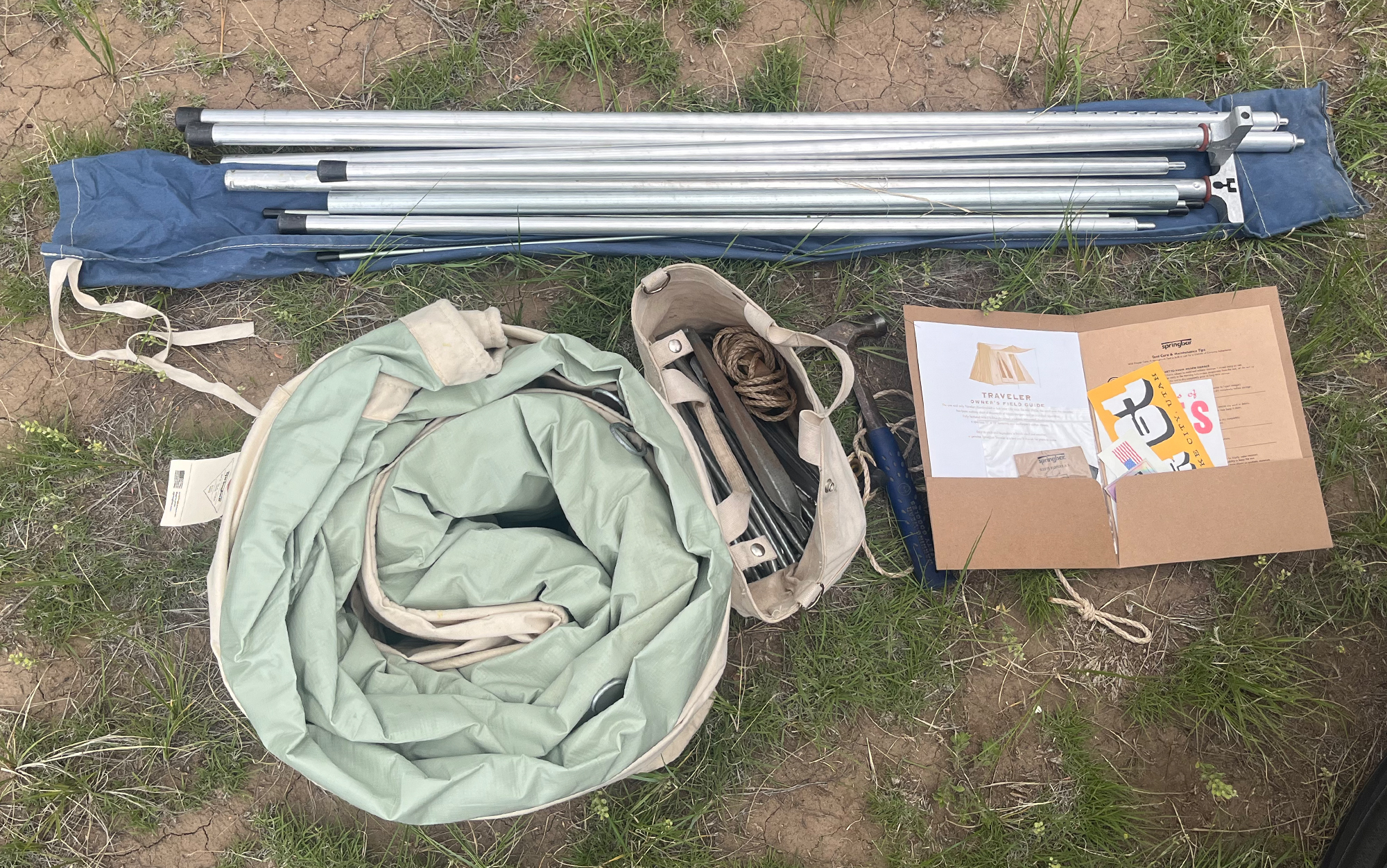
The packed size of the body of this tent is 21 by 15 inches. You also have to bring the 56 by 8-inch bag of poles, but hey, at least they’re skinny. Compare that to the winner of the Best 6 Person Tents test: the Nemo Aurora Highrise 6P Tent at 26 by 9.5 and it isn’t so bad. It’s a little bulky, but to me the space is absolutely justified for the comfort I get once it’s set up at camp. As I said, hammering the stakes takes the most effort, but they are crucial to the structural integrity of the tent.
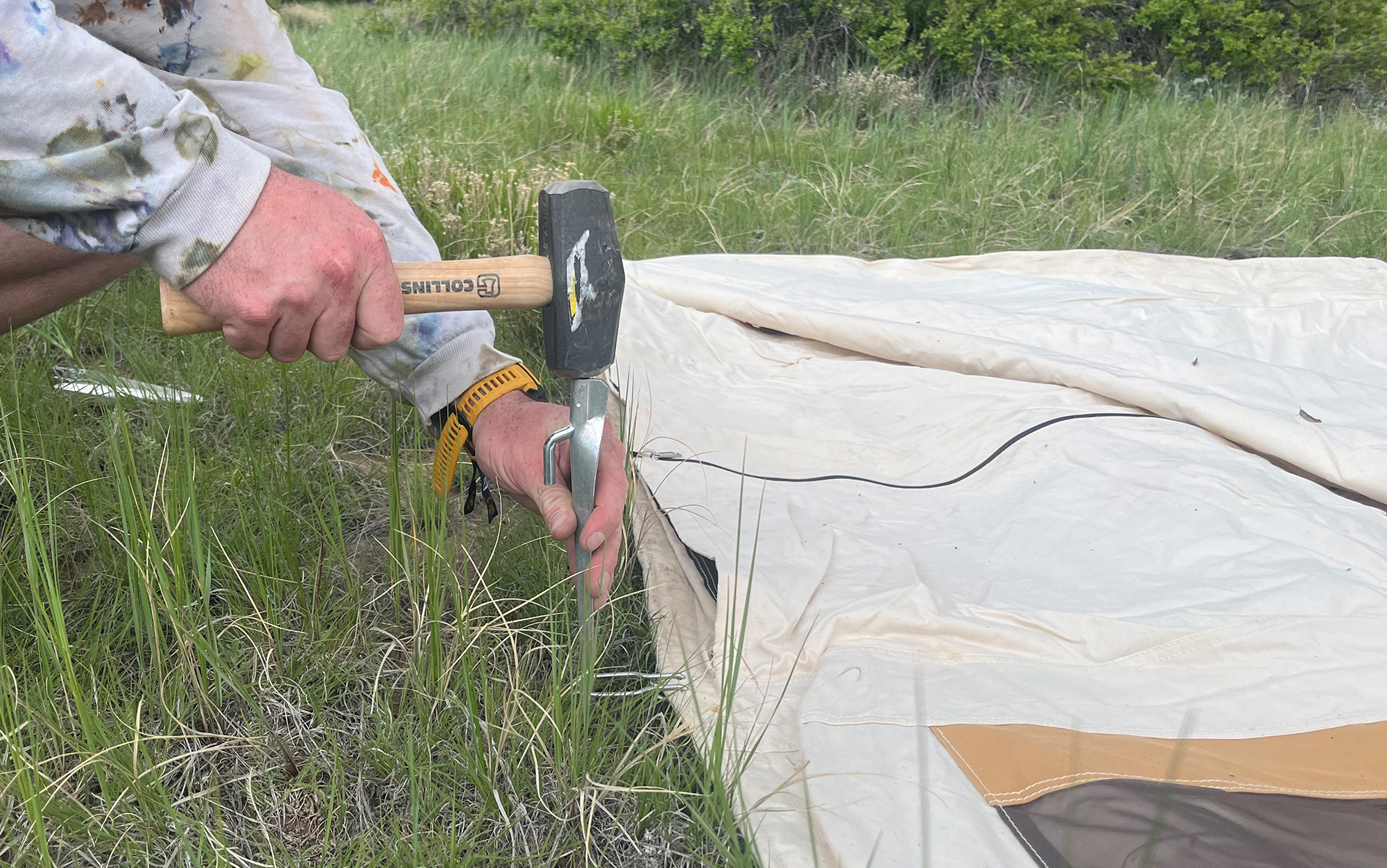
The stakes are so important because the tent is not free standing. The upright poles are tensioned and pull up on the stakes. On one desert trip, I wasn’t able to stake down the tent because the ground was too hard, so I had to improvise. While I’m sure Springbar wouldn’t recommend it, and you’re endangering the seamless vinyl floor, I successfully weighted the tent down using large rocks inside. And it was awesome. When I removed the rocks for takedown, I checked the floor and didn’t notice any tears or punctures (or any wear at all).
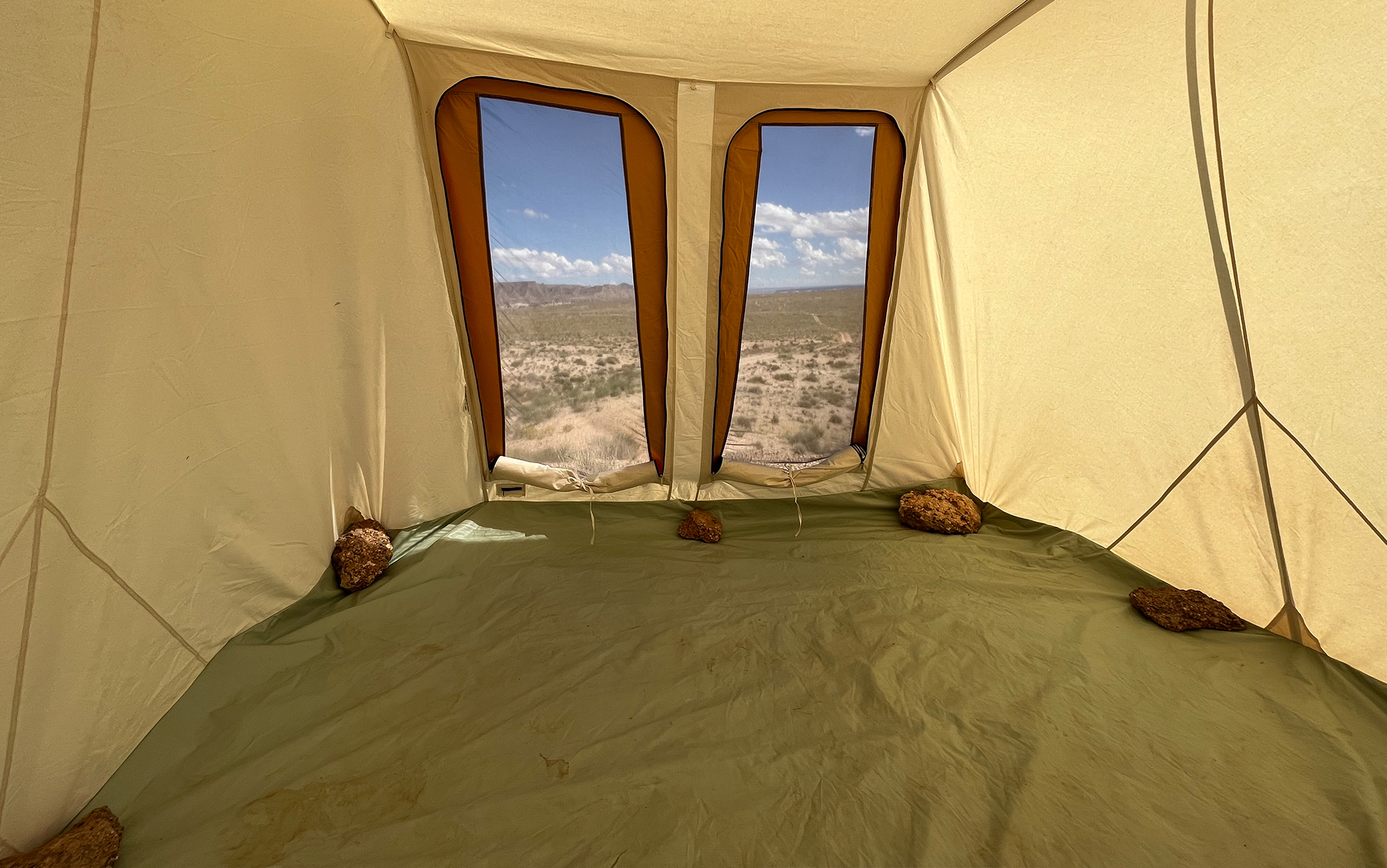
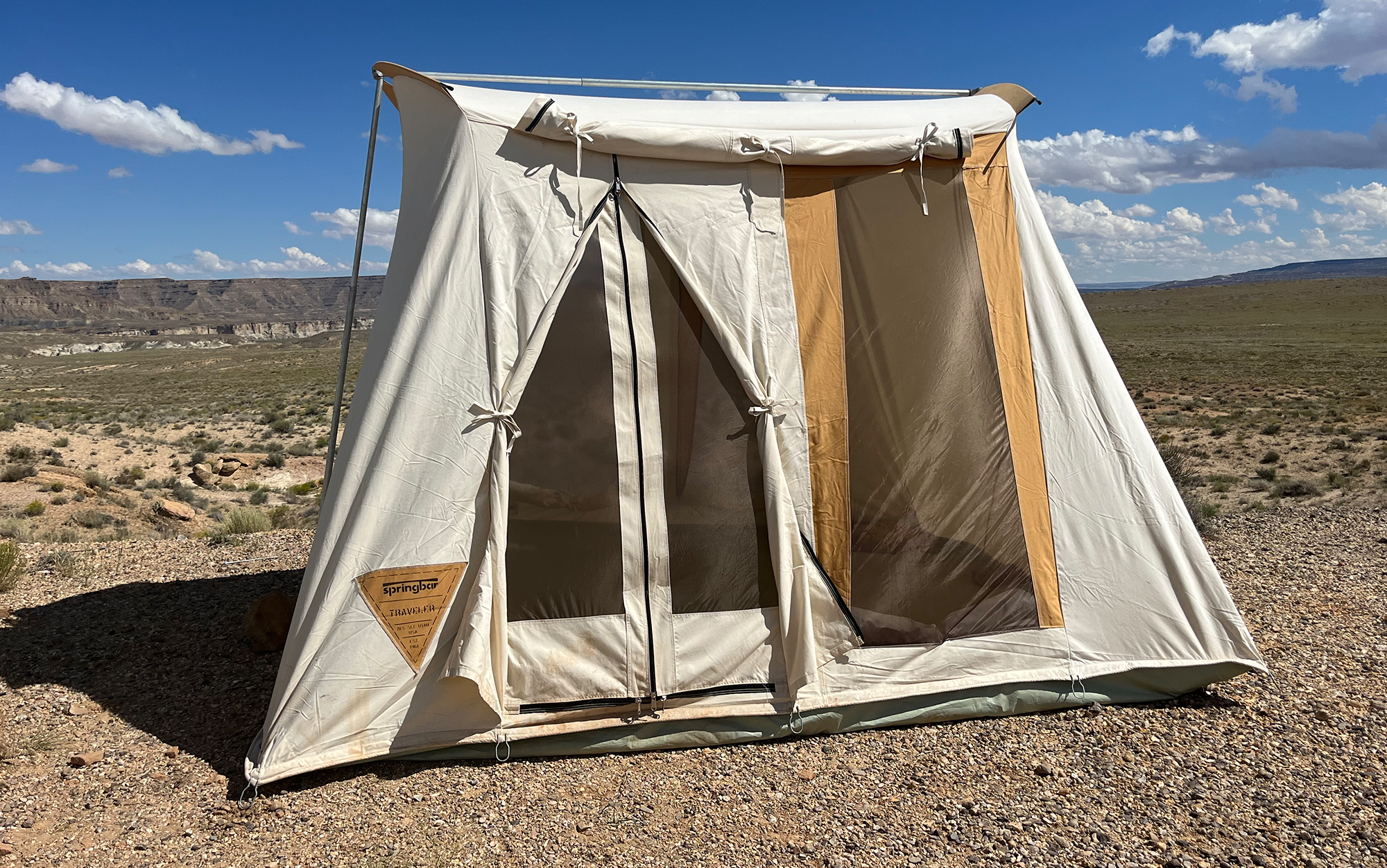
The inside of the tent is spacious and tall. I’ve spent the night in this tent comfortably with two, three, and four people. During a mid-day hail storm, six of us napped inside without issue. And I’ve spent two rainy evenings with seven people inside watching a movie we projected on the conveniently white canvas. The fact that an entire group can comfortably relax inside this tent is one of its major advantages. Whether it’s raining, buggy, or cold, there’s a cozy shelter ready to bring the group together.
After my first few trips with the Springbar, it was looking a little dirty; it is white after all. I was disappointed until a rain storm came along and left it looking good as new. With some easy maintenance and simple care instructions, I believe this tent could last me the rest of my camping days. The lifetime of a canvas tent, and its ability to be repaired, makes it more sustainable than a synthetic tent. Plus, cotton is an organic material that biodegrades, unlike nylon. The Springbar’s killer design and aesthetics makes it way more fun, too.
Springbar has a number of different canvas tent options. The size ranges are 6×8, 7×9, 8×10, 10×10, and 10×14. The models can be cut and sewn by hand in Salt Lake City, like the Traveler, or imported. The imported tents cost less, competing with other imported canvas tents, but still use the traditional Springbar design and undergo diligent testing.
If you’d like to save on a USA-made tent, you can also check out Springbar’s factory seconds page. They offer tents with only aesthetic issues for a discounted price. All of the tents are available in the following colors: pear gray, bison, natural, and suntan. Two of Springbar’s tents, the Classic Jack 140 and Skyliner, are even compatible with stoves.
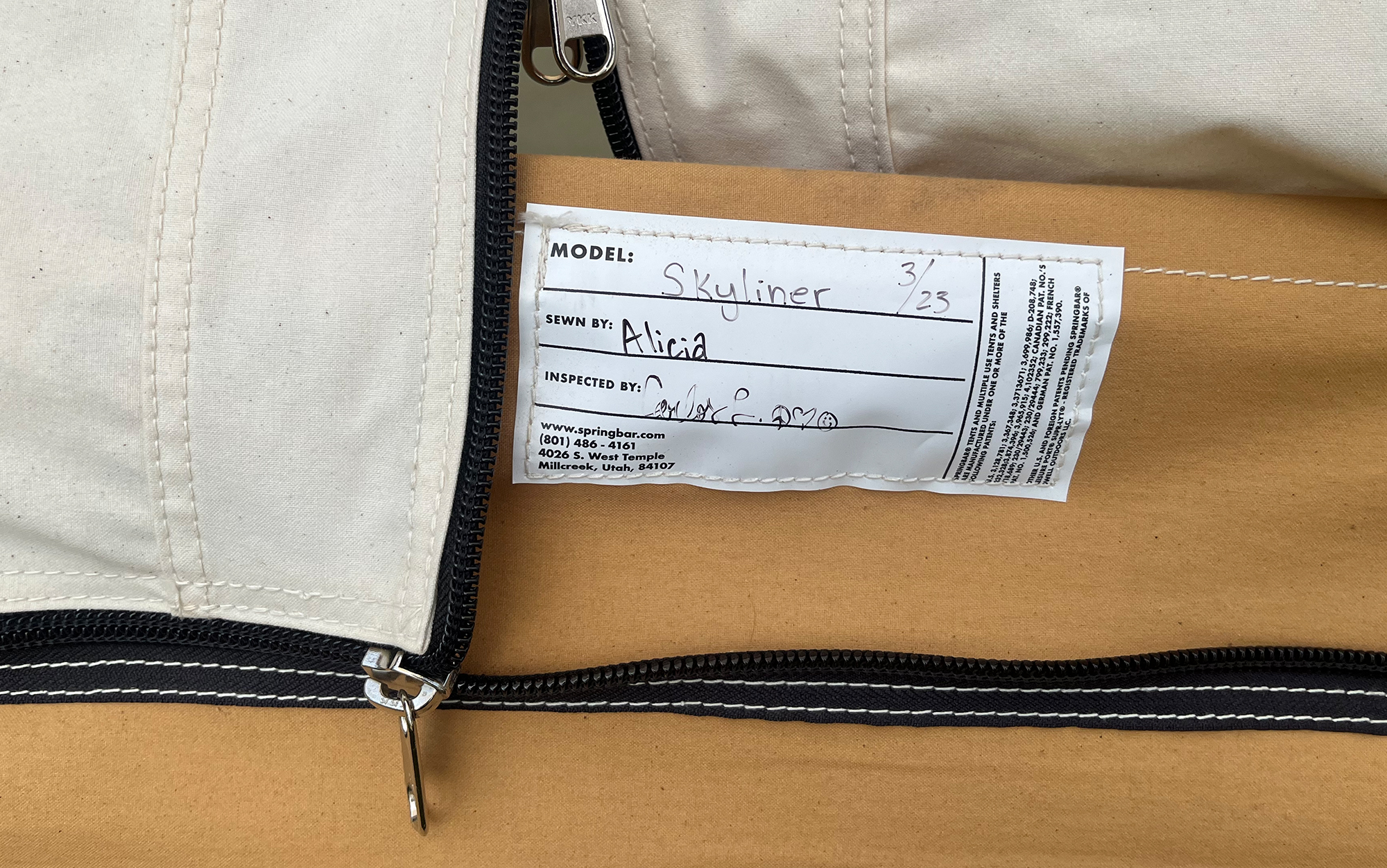
It’s a delight to get back to camp and see this home-away-from-home standing there. And it’s comfortable to hang out in, should the weather turn or you need to escape from bugs in the evening. But most of all, it gives you peace of mind. Whether you’re tucked in your sleeping bag or away from camp, there’s no doubt this tent will stay standing. My guide at the sew shop in Utah said that he had a Springbar tent up in his backyard for three years without issue. I think if you spend enough time outdoors, a reliable, durable tent like this is a sustainable investment that will bring you joy for quite literally the rest of your life. — Ashley Thess
Best Hot Tent: Nortent Gamme 6
Key Features
- Weight: 16.75 pounds (tent), 37.5 pounds (stove)
- Pairs with Nortent stainless steel stove
- Available Add-ons: Floor, inner tent, gear pockets
Pros
- Simple to set up with a highly weather resistant exterior
- Dual entry and exit options
- The best stove of any tent I tested
Cons
- Difficult to maximize the interior space, especially with the inner tent
- Learning curve with the stove
The Nortent Gamme 6 was the package deal. Straightforward and easy to set up. Excellent protection against all manner of weather. And the best stove, in terms of ease of use, functionality, and aesthetics. Whether you are looking for a hunting base camp or trying to extend your camping season into the fall months and beyond, this is an excellent choice.
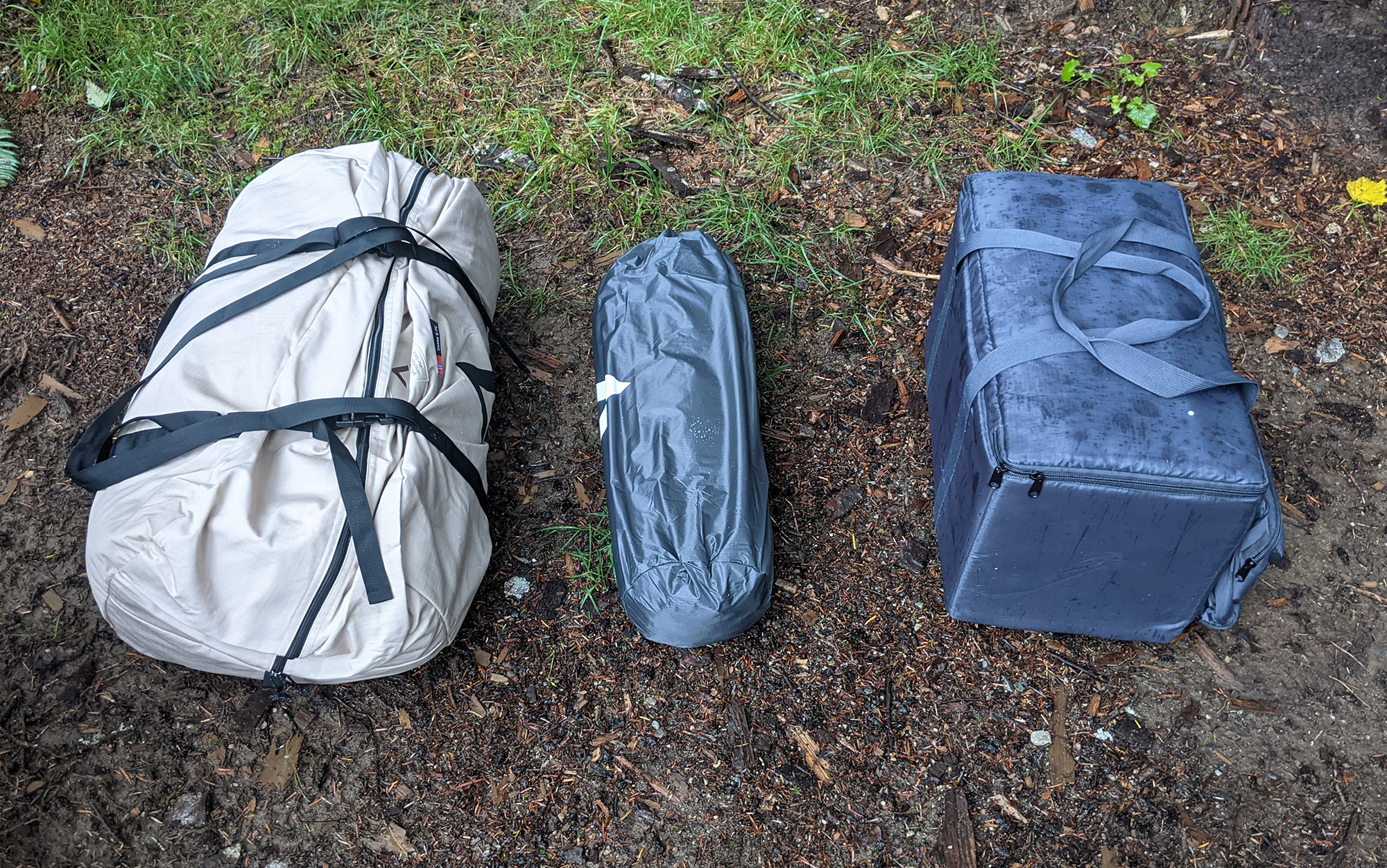
Laura Lancaster
Even just out of the box, the quality of the build of the Nortent was evident. Both the tent (left in the above picture) and the stove (right) came in their own carry sacks, making them easy to transport. Assembly was straightforward, with color-coded poles fitting into sleeves, and secured at the base in a crisscross design for increased stability in foul weather. One aspect of the design that I appreciated is that the Nortent Gamme 6, similar to other tents from European manufacturers that we’ve tested, has the poles connect to the exterior shell (what American manufacturers would refer to as the rainfly but here is thick canvas). Then you can head inside your tent and stay dry while you clip together the inner tent lining.
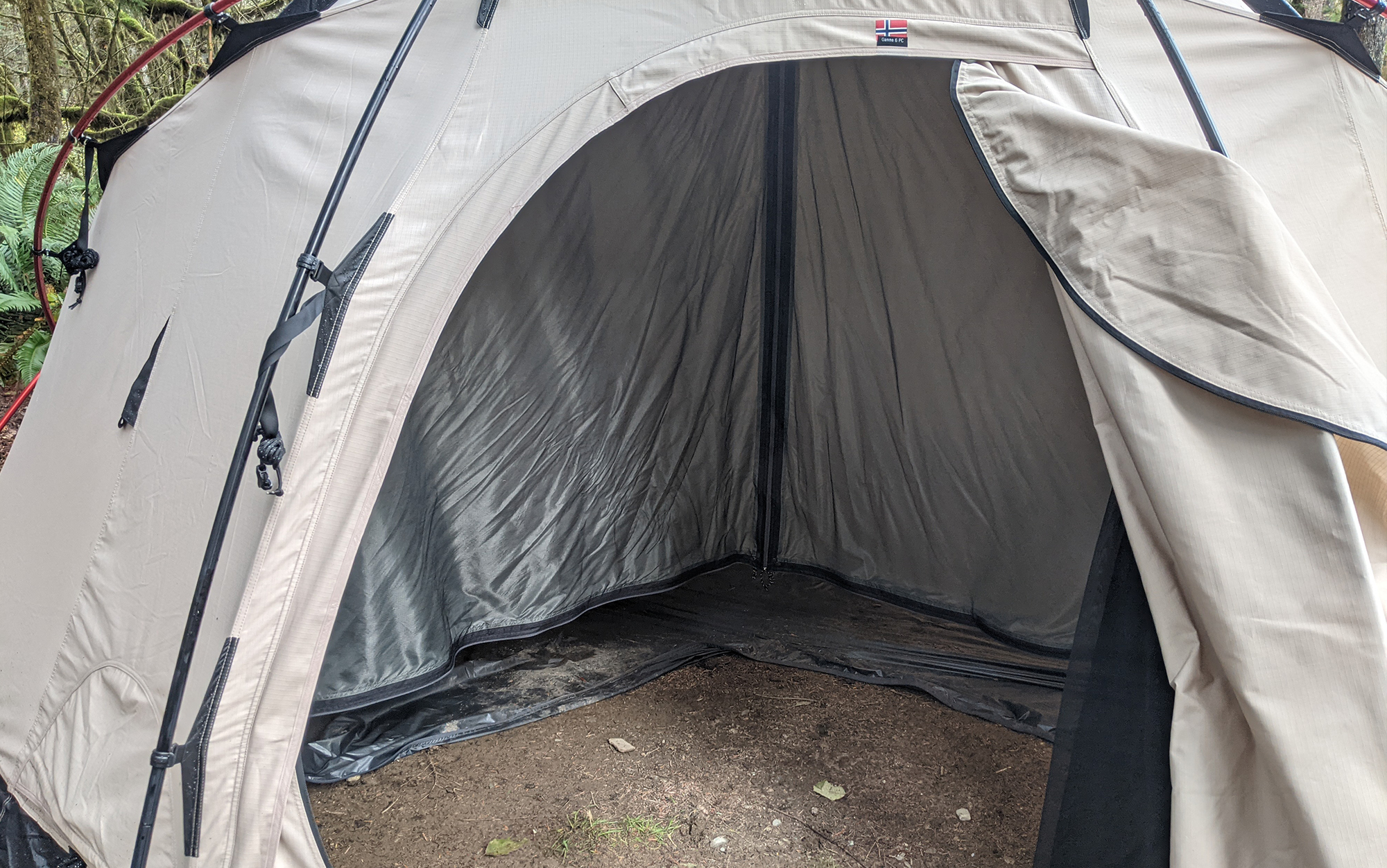
Laura Lancaster
The stove was also a breeze to set up. The pipes come in separate pieces that fit inside the body of the stove for transport, while the legs fold down from the outside. This was easily the fastest stove to set up of any that I looked at, and, aesthetically, it is beautiful. There is tempered glass on three sides of the stove, allowing you to monitor the coals without having to open the door to check. It’s very pleasant to look at, as if you are sitting around a campfire inside your tent. The Nortent Stainless Steel Stove also comes with a grate, so that the intake air can flow above and below the wood as it’s burning.
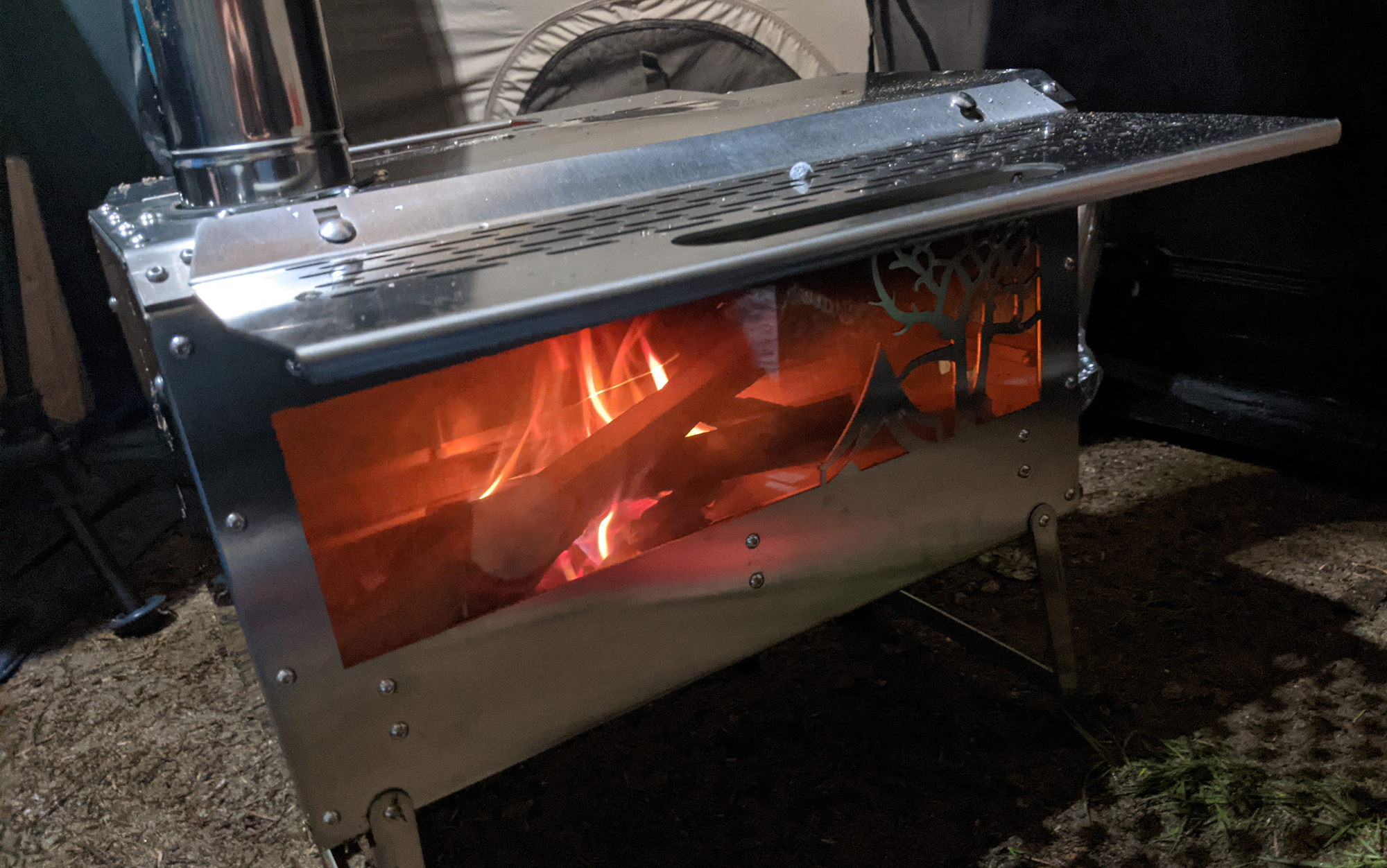
Laura Lancaster
The other stoves I tested had a straightforward design: door on one side, with some air intake holes you could open and close. The stove interior was simply a box with a hole in the back for the stovepipe. Maybe it had a flue. But the Nortent stove was different, with a second sheet of stainless steel (baffle) below the stovepipe outlet running almost to the front of the stove. The primary benefit of this design is that the hot air has to travel a longer distance as it snakes its way toward the stovepipe, dispelling more warmth into your tent as it goes.
To help you even further maximize its heating potential, you can open a second set of air intake valves at the top of the stove so that the smoke fully combusts (even more heat) before exiting the stove pipe. That means you need less fuel while getting a cleaner burn and generating more heat. It’s a very effective design: On the night that we tested this tent and stove setup, we burned a small packet of kindling and were plenty cozy. It was also the only stove I tested that I didn’t have to “burn in” once before taking out into the field.
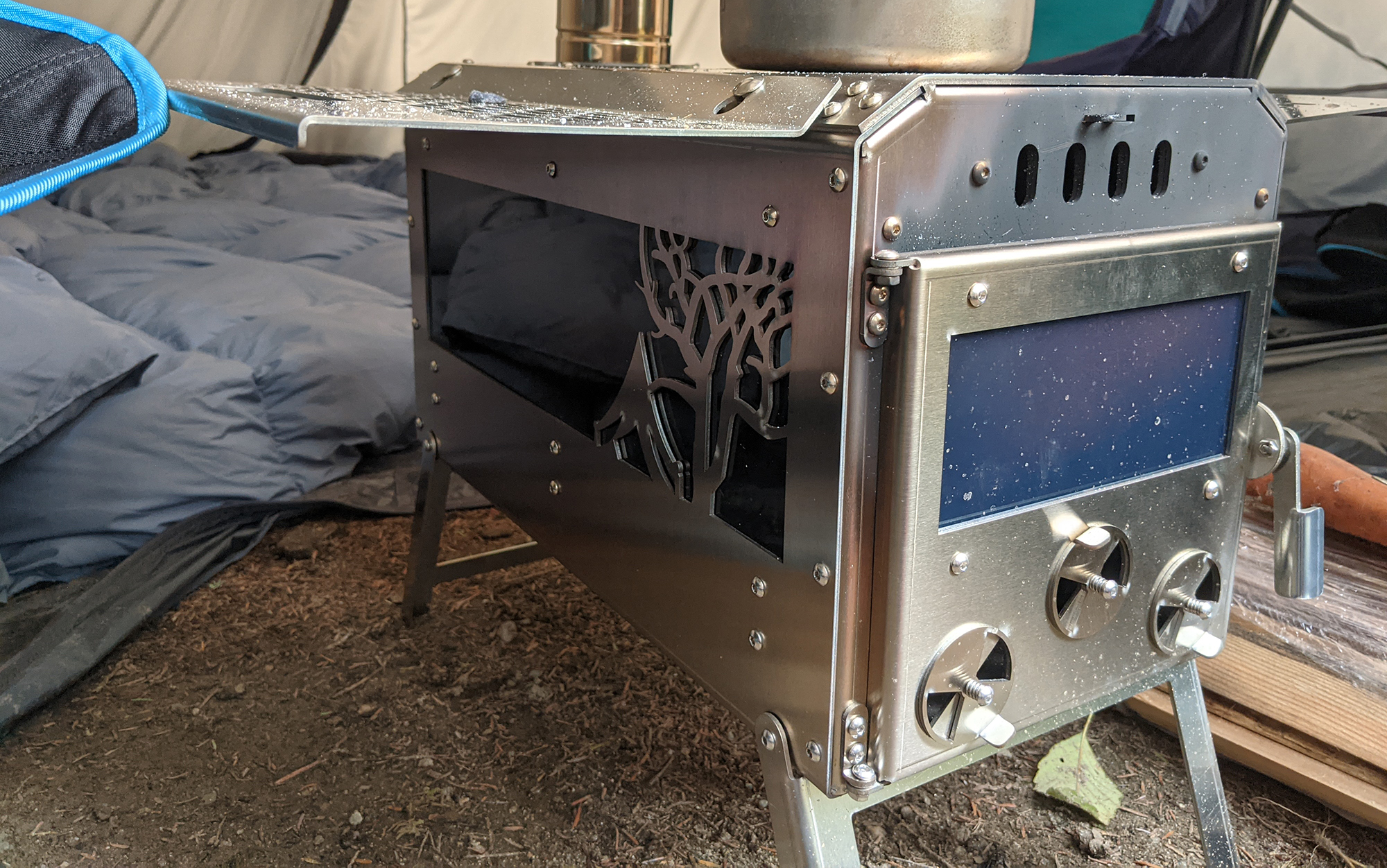
Laura Lancaster
The catch is that it takes some getting used to. Hot tent wood-burning stoves should be heated up slowly at first, as until the stove pipe itself has started to warm up some, the negative pressure created by the cold air outside the tent will prevent the smoke from exiting the stove pipe efficiently. Instead, the smoke buildup inside the stove will try to escape by any means necessary out the air intake holes or even the seams of the stove itself.
While trying to get the hang of this stove, I twice smoked myself out of the tent entirely. I would be very cautious about opening up that second set of air intakes on the top of the door (my initial error), as the smoke is traveling toward the top of the door as it journeys toward the stovepipe. But once you get the hang of it, it’s intuitive and works well.
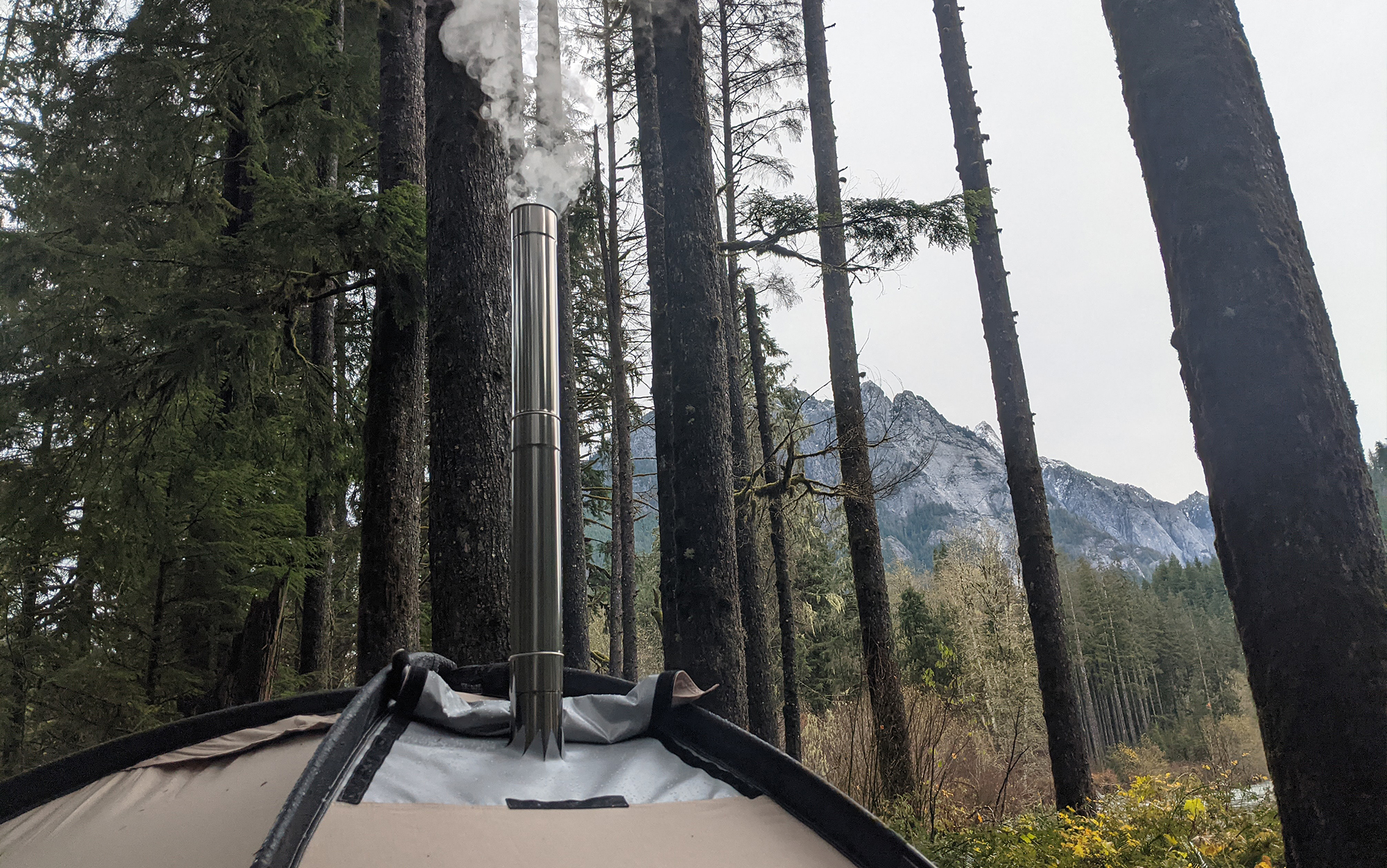
Laura Lancaster
While I tested the Nortent with the inner tent accessory, I would recommend most individuals purchase a floor instead. The size and shape of the inner tent combined with the dome shape of the tent itself overly restricts your usable space. There was too much space in the inner tent.
Read Next: Best Hot Tents, Tested and Reviewed
How to Choose the Best Camping Tent
Square Footage
As anyone who has bought a tent knows, the stated number of people a tent can fit and the actual number of people you would want to fit in a tent can vary significantly. And gear like sleeping pads and sleeping bags will quickly take up room. Check the dimensions of any tent you are considering to determine whether it will fit the family or group you will be camping with.
Ease of Set Up
Most 8-person tents require two people to set up, which can be a challenge for families with small children. In those instances, speed is king. One rule of thumb that can help you determine how long it will take to set up a tent is to look at the number of poles. Typically, more poles will indicate a longer, more complicated set-up time, while a tent with fewer poles should come together relatively quickly.
Ceiling Height
One of the great joys of an 8-person tent is finally being able to stand up inside. The tents in my test had ceiling heights between just over 6 feet, all the way up to seven feet, but there was also variability in whether this height was at a single point or spread along the spine of the tent.
Packed Size
A large footprint unfortunately also means more space taken up in transit. If you have a smaller car, consider choosing an 8-person tent with a smaller packed size.
FAQs
The best tent brands are those that have decades of experience in the outdoors, be it camping or backpacking, and are attuned to how the engineering details of a tent make it more or less adaptable to different climates or weather conditions. Most, although not all, also use higher quality material that will typically last longer than lower grade nylon or polyester. Finally, a high-quality tent will have a long warranty period — if a manufacturer isn’t willing to guarantee their tent for more than a season, it probably isn’t any good.
The biggest factor in camping comfort is warmth. If you’re cold, you’re going to be uncomfortable. Purchasing a high quality sleeping pad will not only cushion you against the ground, but it will also insulate you from the cold of the ground. When choosing a sleeping bag, look for something rated at least twenty degrees lower than what you expect your coldest overnight temp to be. Bring blankets. Lots of blankets.
You cannot insulate a standard camping tent for winter. Consider purchasing a winter tent (which will provide additional insulation and structural support against snow loads) or looking into warmer layers and a sleeping bag.
Camping tents can cost anywhere from $100 to upwards of $1,000 or even more depending on their size and level of quality.
Final Thoughts on the Best Camping Tents
There is an impressive array of camping tents available, from massive 8-person palaces (with headroom for the whole family to two-person tents that are really only big enough for one. We’re confident that any of the picks on this list would serve you well on your next trip to the great outdoors.
- Best 4-Person: MSR Habiscape
- Best 6-Person: NEMO Aurora Highrise 6P
- Best 8-Person: Eureka Copper Canyon LX8
- Best for Light Sleepers: Coleman Dark Room Skydome
- Best Rooftop: iKamper Skycamp 2.0
- Best Instant: Magellan Outdoors Pro SwiftRise 4-Person Hub Tent
- Best Canvas: Springbar Traveler
- Best Hot Tent: Nortent Gamme 6
